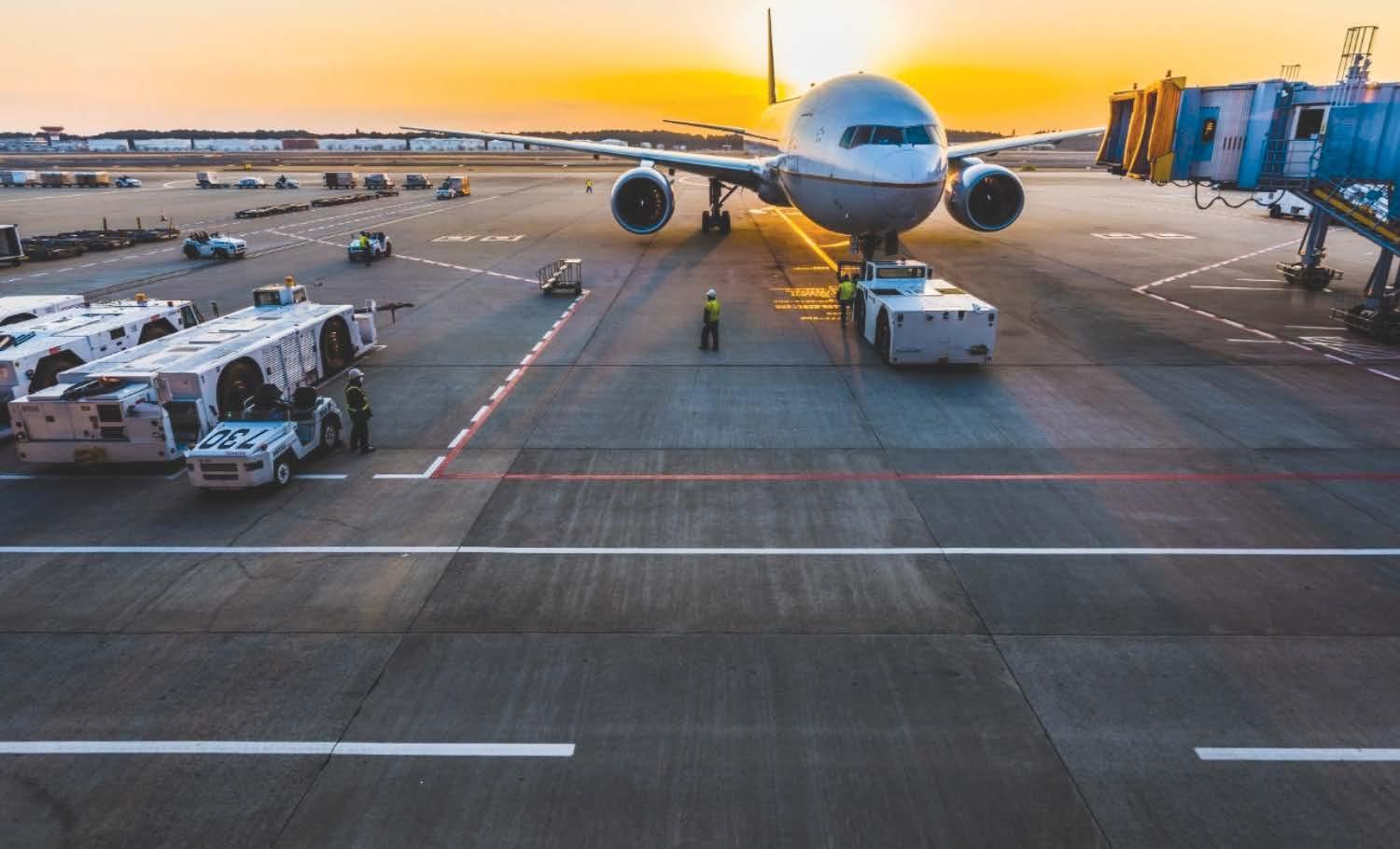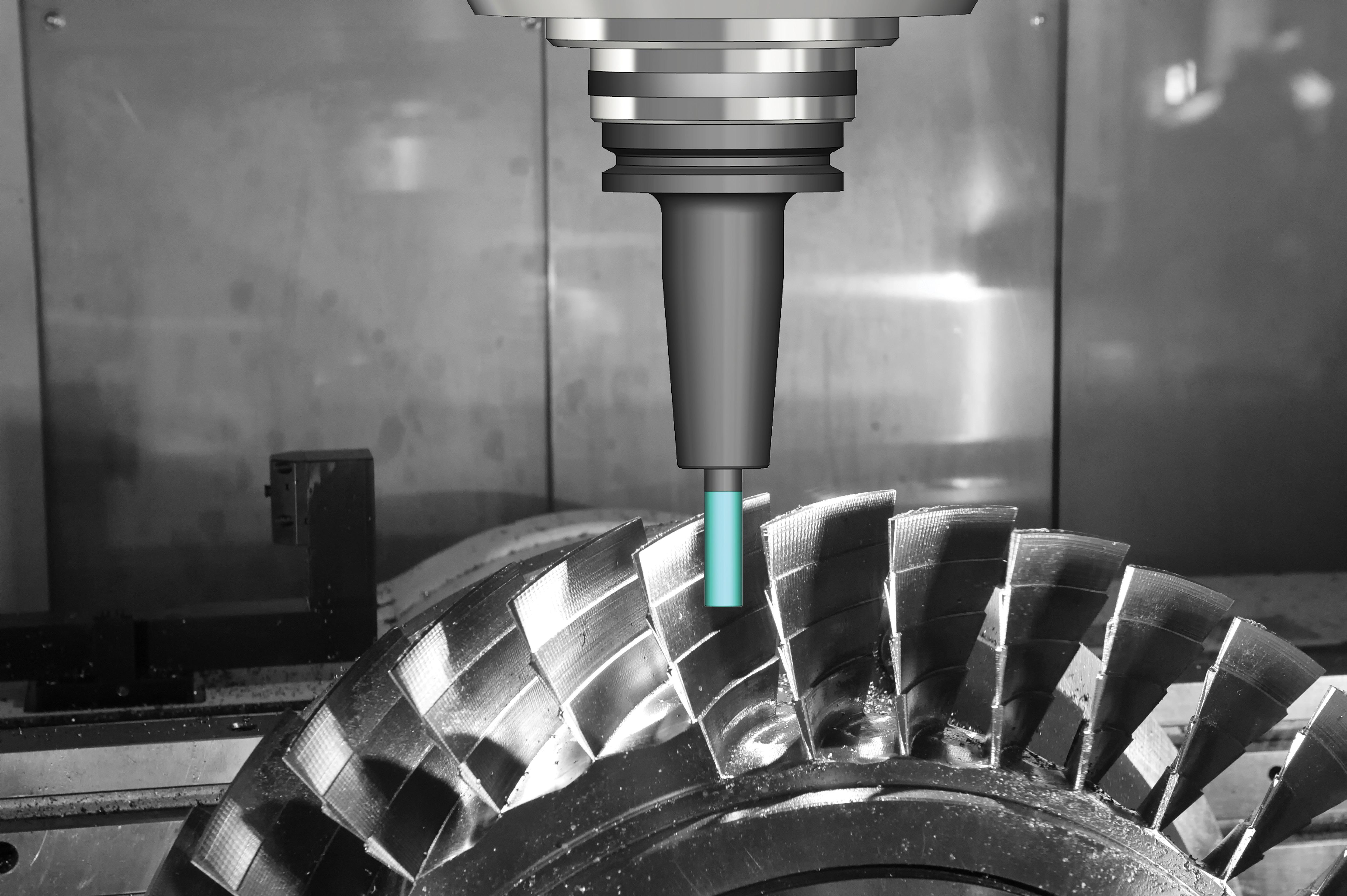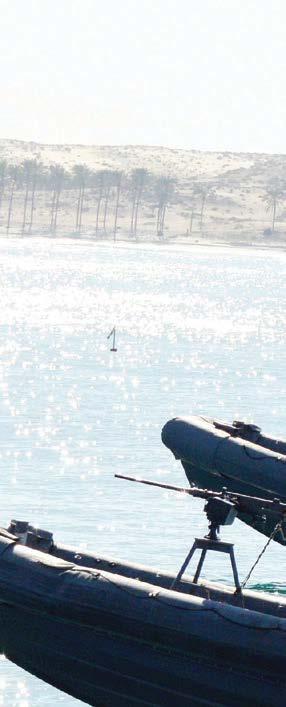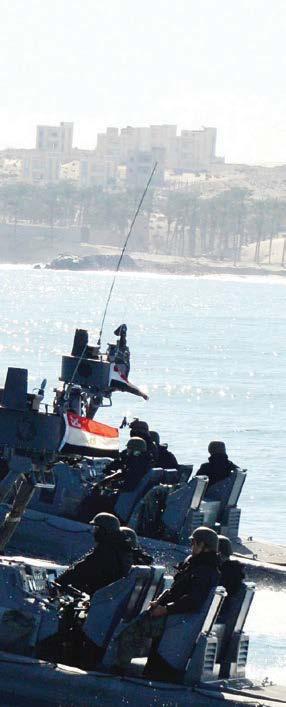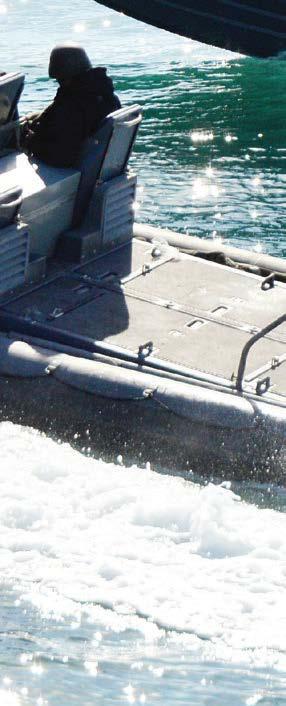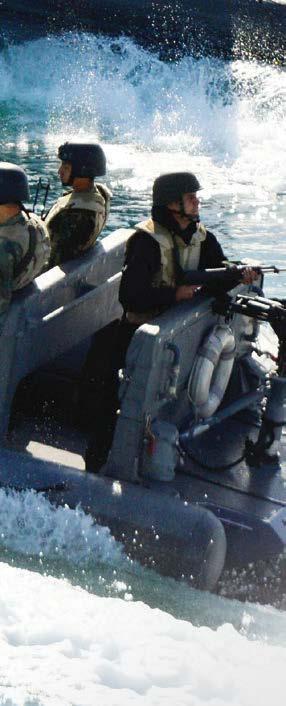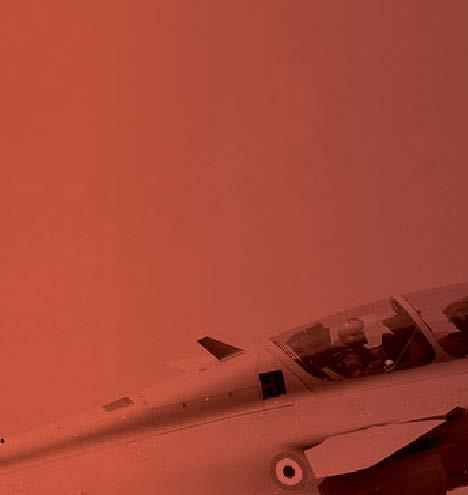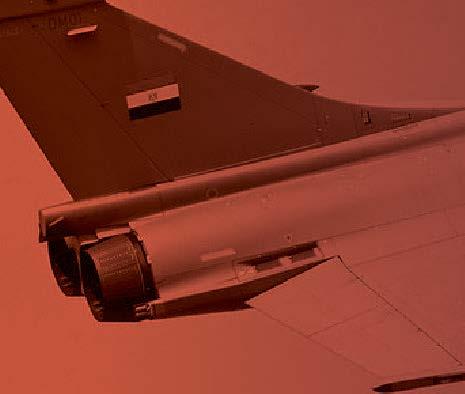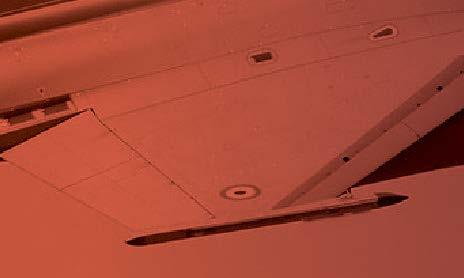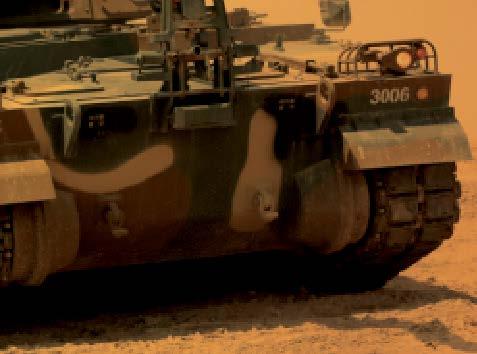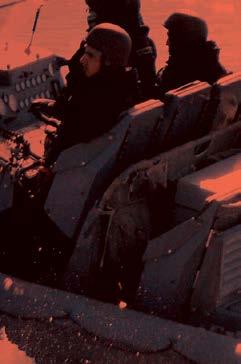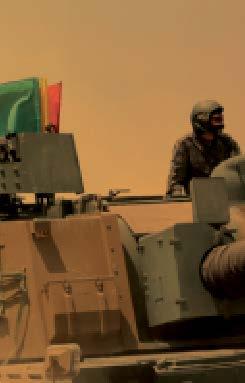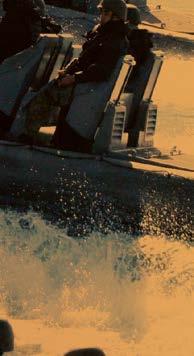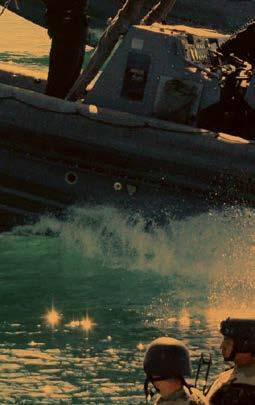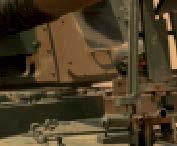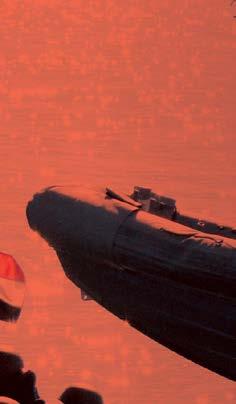






IAI INDIA PVT LTD, a subsidiary To IAI LTD, provides customer support, marketing and business development services for all IAI solutions. With the changing strategic transformation in India, we enhance all needed requirements to process and to provide fast direct access of IAI superior solutions. Thus fully supporting India's vision of "Atma Nirbhar Bharat" as part of our continued long-lasting partnership and commitment of being self reliant.




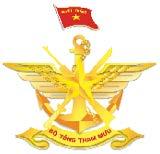

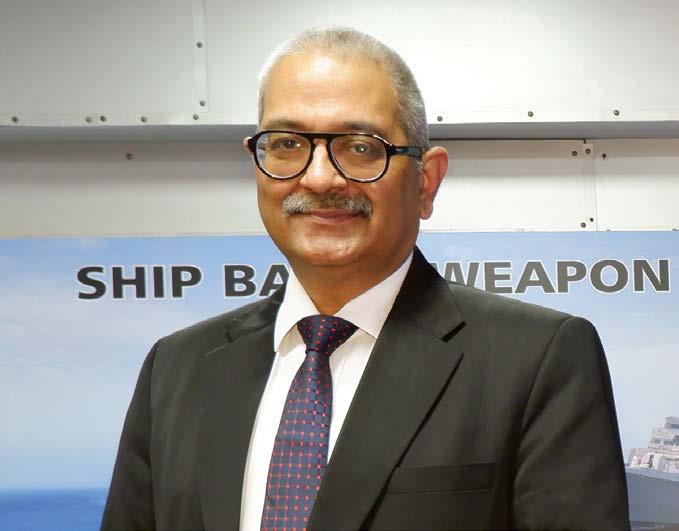
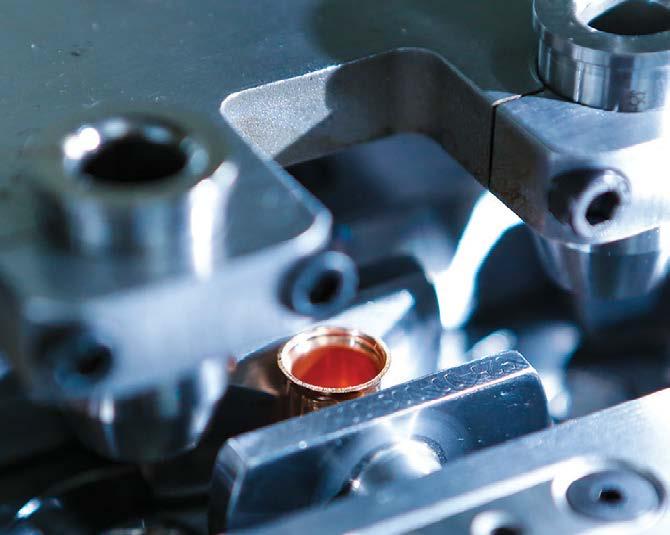

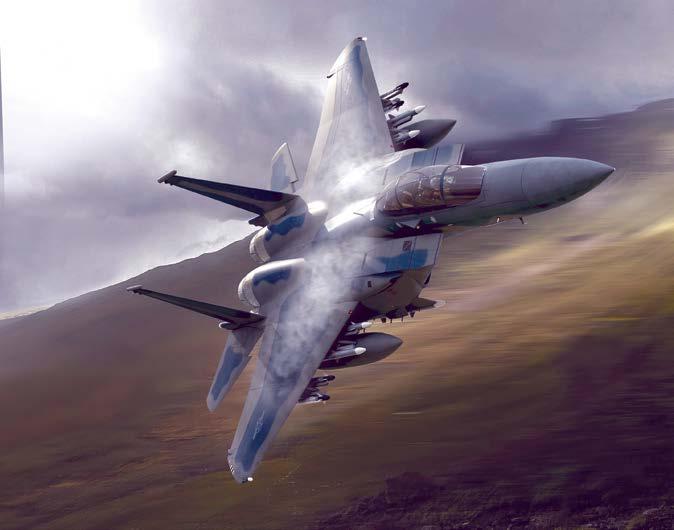

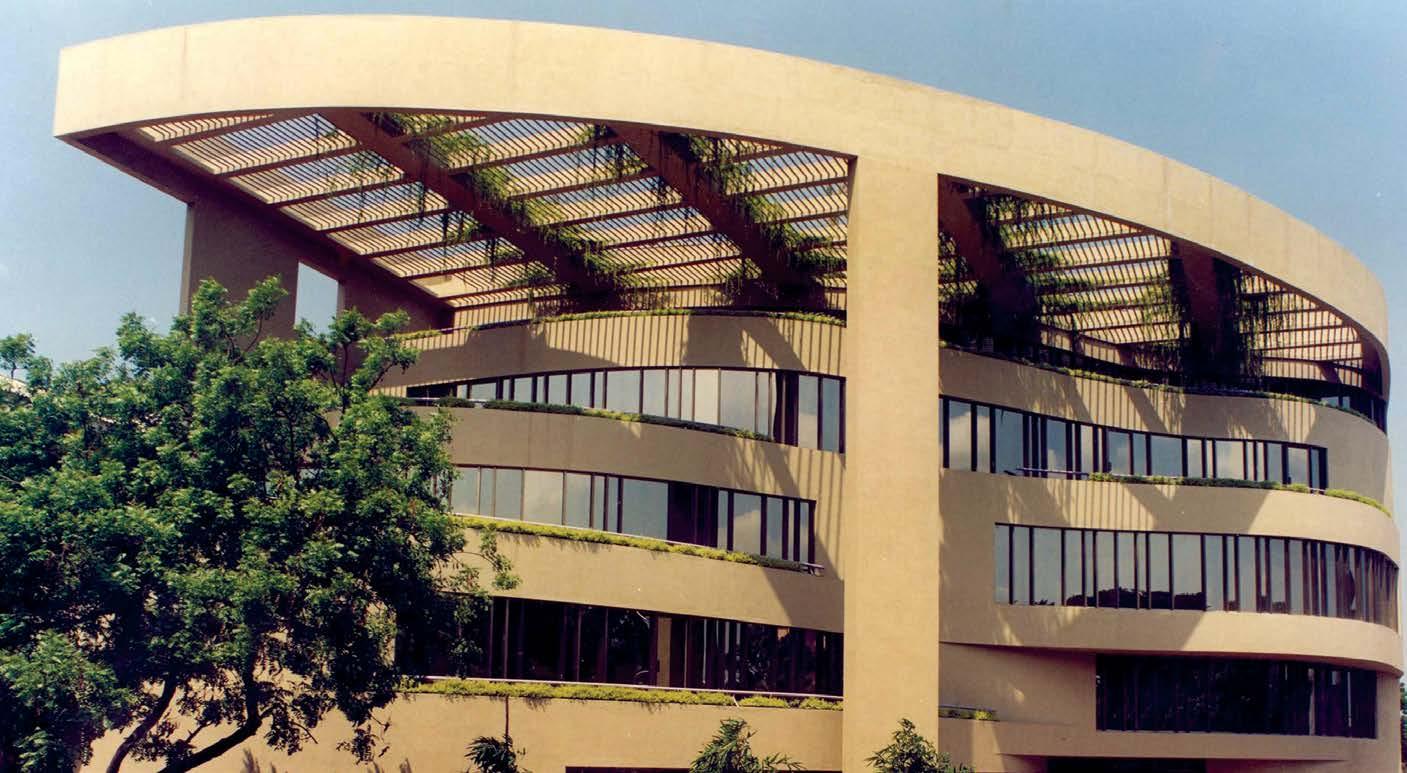


































Providing consultancy and market development services for security and defence industries,TRD has been a pioneer in the anti-drone domain. Beginning operations from a small consultancy firm in 2011 and growing massively into a full-fledged system integrator for complete detect-anddefeat anti-drone solution, TRD is also an Original Equipment Manufacturer (OEM) for defeat systems with its flaship Orion Drone Gun products.
Sam Ong Founder and CEO, TRD
TRD offers a full spectrum of Anti-drone system to protect vital installation and defence. Could you talk about the company’s inception and growth?
TRD is a pioneer in the Anti-drone domain, beginning operations from a small consultancy firm in 2011 and growing massively into a full-fledged system integrator for complete detectand-defeat Anti-drone solution, as well as an Original Equipment Manufacturer (OEM) for defeat systems with our flagship ORION Drone Gun products that are already fielded and proven in 18 countries since 2017.
Having first succeeded in our homeground, we have further established operations in different parts of the world and proceeded to be at the forefront of
Today,TRD’s systems span across the world in various segments from safeguarding vital installations such as oil and gas and international airports, to VVIP force and event protection as well as military applications. Speaking to Aeromag, Sam Ong, Founder and CEO of TRD, talks about the company’s operations and its journey ahead.
the industry, competing head-to-head against global companies and winning competition for international projects along our strategy of Grow ASEAN Go Global.
Today, TRD’s systems span across the world in various segments from safeguarding vital installations such as oil and gas and international airports, to VVIP force and event protection as well as military applications. TRD is now ready to further embark on the next bound of our journey to transfer our technology for local production in selected regions for homeland security applications as well as implementing advanced soft kill, directed energy weapon and hard kill Anti-drone technologies into our overall solution to defend against more sophisticated and
emerging drone threats especially in the military domain.
Could you give us an overall brief on the company’s portfolio of products and services?
TRD’s ORION family of Anti-drone systems include a range of portable, vehicle-/ship-mounted and fixed-site solutions that comprise active radar, passive Radio Frequency (RF) detection, electro-optical and infrared (EOIR) camera, jammer, spoofing, take control, C2 software system, as well as hardkill and “drone-on-drone” capabilities. This addresses the wider spectrum of drone threats and operational scenarios, including autonomous 24/7 area protection.
TRD develops and owns all our Antidrone mitigation products including the newly announced first-in-the-world ORION-H7 Drone Gun, 8-band selectable ORION-11 RF Jammer, as well as the ORION-12 wide-band selectable jammer that has been proven to be able take down 4G/5G drones in our recent demonstration at the EW Live event in Estonia in September 2022!
Beyond being an OEM for mitigation systems, TRD further offers customised full-suite of integrated Anti-drone solution and provides Antidrone-as-a-Service as well as leasing and training services to offer customers an option to be quickly equipped with Anti-drone capabilities without having to invest upfront.
It is the era of drones and most countries are actively pursuing diverse capabilities in both drone and Antidrone technologies. How does the company intend to tap the potential?
TRD’s main focus is on Anti-drone capabilities and aims to develop the fullspectrum of defeat technology to deal with current and emerging drone threats, with solutions ranging from soft kill to hard kill and drone-on-drone.
Having said that, the company also sees synergies between drone and Anti-drone, hence it is part of our aspiration to become a more holistic company by upgrading drones with capabilities to tackle threats. TRD is currently undergoing testing for one of its first Vertical Take-Off and Landing (VTOL) Unmanned Aerial Vehicle (UAV) project delivery to an Asian customer, and we look to incorporate Anti-drone
technology on this UAV platform to detect drone threats and defeat them from the sky!
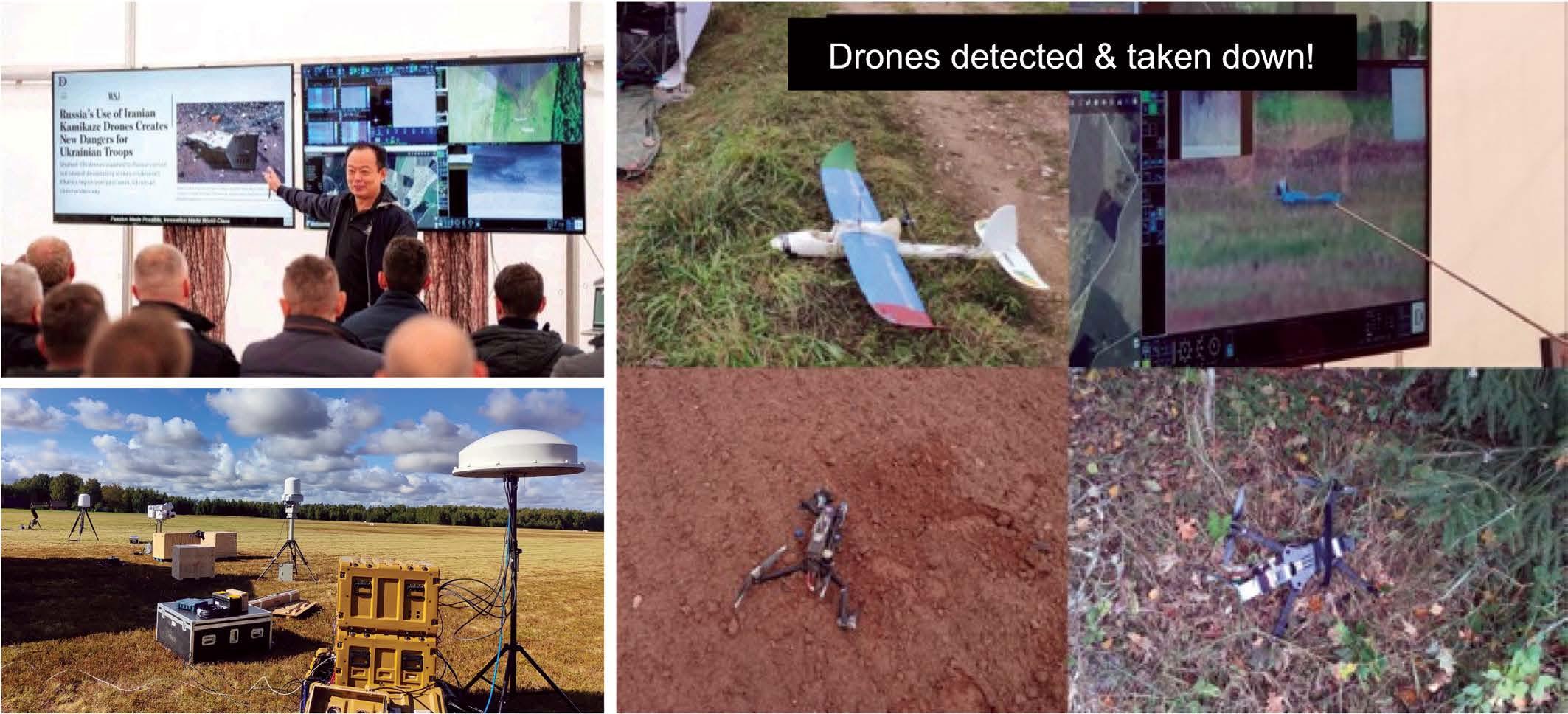
Additionally, we are exploring partnership with other established Antidrone technology company to incorporate all kind of proven systems into our overall solution.
TRD’s products have been deployed and proven in over 18 countries. What are the operations of the company in ASEAN, Middle East and the rest of the world?
TRD’s headquarters is located in Singapore, where we have our main design, R&D, production, projects, staging, operations and support, as well as testing and logistics facilities for our inhouse manufactured products.
TRD also has a branch office in Thailand, where the team conducts live testing and demonstrations of our full-suite integrated solutions to customers, and we are even looking to further develop it into an Antidrone Test Centre for future and ongoing projects.
Across the rest of the world such as Middle East, Europe and Americas, TRD has engaged marketing representatives and partners to break into these new markets and work closely with them to provide the local customers with a good solution while ensuring a responsive continuous after-sales support. When businesses become larger, it is in TRD’s intention to look into transferring our technology to these countries, similar to what we have done in some markets.
How does TRD cater to the Anti-drone tech needs of Indonesia? What are the operations in Indonesia?
TRD’s in-house Drone Jammer products have been used in Indonesia since 2019. The systems have been deployed and proven effective to protect events and infrastructure. Our systems will also be deployed during the 2022 G20 Bali Summit to keep the event safe against any potential drone threats.
TRD provides turnkey Anti-drone solutions as well as customised products for the Indonesian market. We bring forth our advanced capabilities as well as experiences in deploying these systems for vital installations and for defence and security protection.
TRD is working with a few local partners in Indonesia to promote our ORION Antidrone systems and increase our market share. Moving forward, we are looking to open up our third branch here in Indonesia to further develop and test our products, as well as for technology transfer and local production. TRD is further exploring the possibility of setting up a factory in Indonesia with a local company under Joint Venture to supply Anti-drone systems locally and to the world.
Could you elaborate on the company’s advanced state-of-the-art ORION-I Anti-drone Vehicle that was unveiled recently?
The ORION-I Anti-drone Vehicle consists of a comprehensive range of Antidrone systems from detection (Radar, RF, Camera) to defeat (Jammer) all integrated into one single platform with its own in-
built C2, providing the customer with a flexibility to deploy at different locations anytime, anywhere.
The ORION-I Anti-drone Vehicle is 100% designed and built in-house by TRD, from conceptualisation, to engineering and systems design, as well as integration and assembly of the full system, according to customer’s requirements. It has been radiation safety certified and compliant to EMI/EMC standards internationally. The team is proud to say that the vehicle has also passed extensive and stringent field tests in very demanding operational scenarios including an urban environment stipulated by the customer.
The vehicle can be further customised to incorporate hard kill solutions such as laser, drone net and kinetics, or even drone-on-
drone solutions.
How strong is the company’s R&D, testing and production facilities?
Close to 80% of TRD’s employees are engineers with years of defence, security and military operational experience. The company also builds strong ties with international technology partners in the business with ability to tap on their bestin-class technologies.
Our R&D and capability development roadmap for Anti-drone anticipates ahead drone technology trends. Our R&D team continually designs innovative ideas by thinking out-of-the-box, improving and performing robust testing of new solutions that incorporate effective operational concept and yet at an affordable price
before getting them into production.
We overcome the limitation of testing full systems on our home-ground by establishing bases in neighbouring countries such as Thailand to ensure that all our systems are field tested and proven effective in real-world situations.
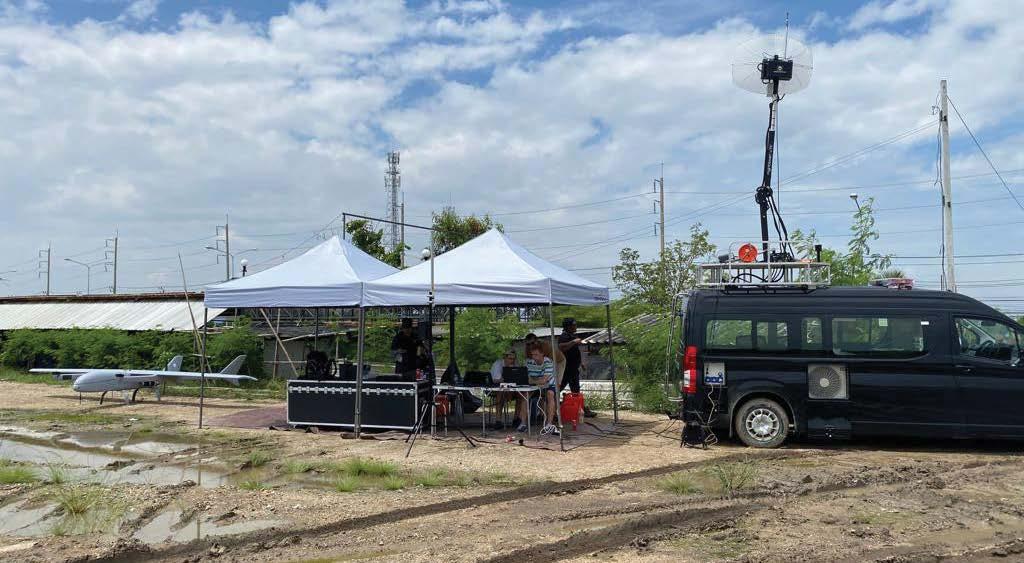
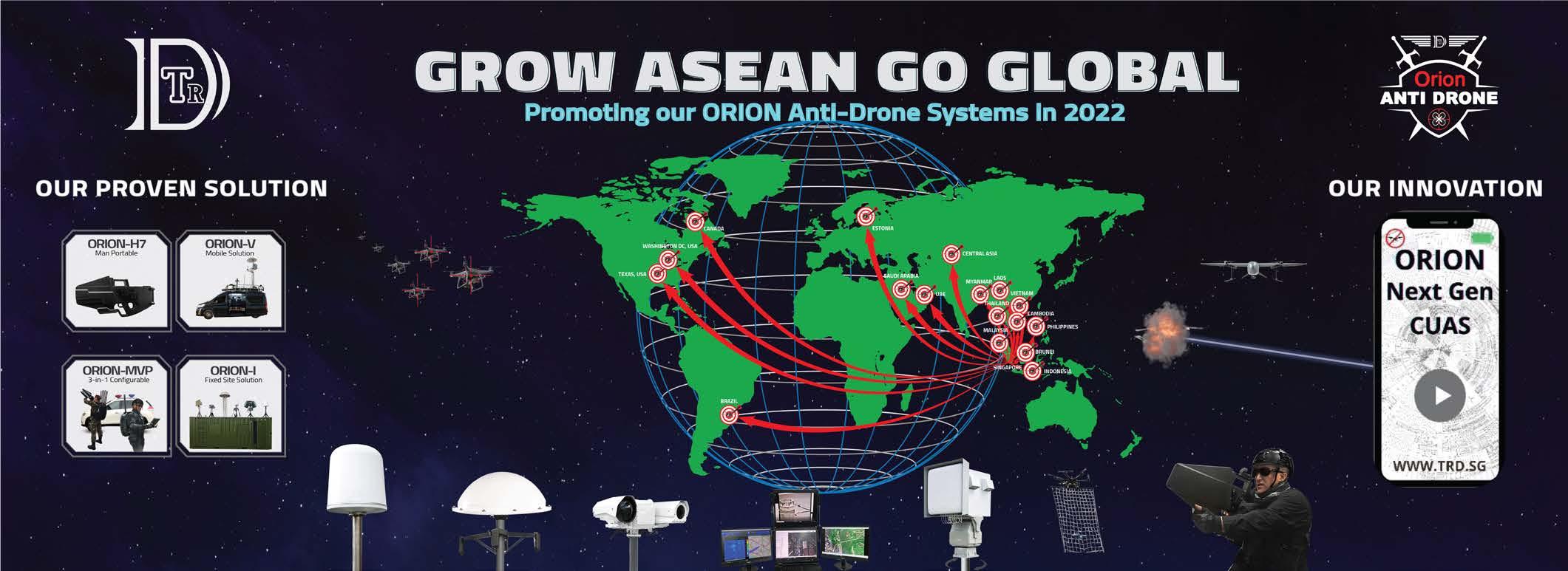
Despite having an established production facility in Singapore, TRD’s long-term strategy is to enable production in a customer’s own country to better meet the demands and build targeted Antidrone solutions for each market.
How do you look at Indo Defence 2022?
Indonesia is one of the strategic markets for TRD. Indo Defence will be a good opportunity for TRD to brand and market our company as well as
TRD’s Strategy to Grow ASEAN Go Global in Year 2022.
our industry-leading and battle-proven ORION systems to Indonesia and the wider Southeast Asian and international markets that will be present at the show, convincing authorities that we can meet the full demand of their requirements in Anti-drone.
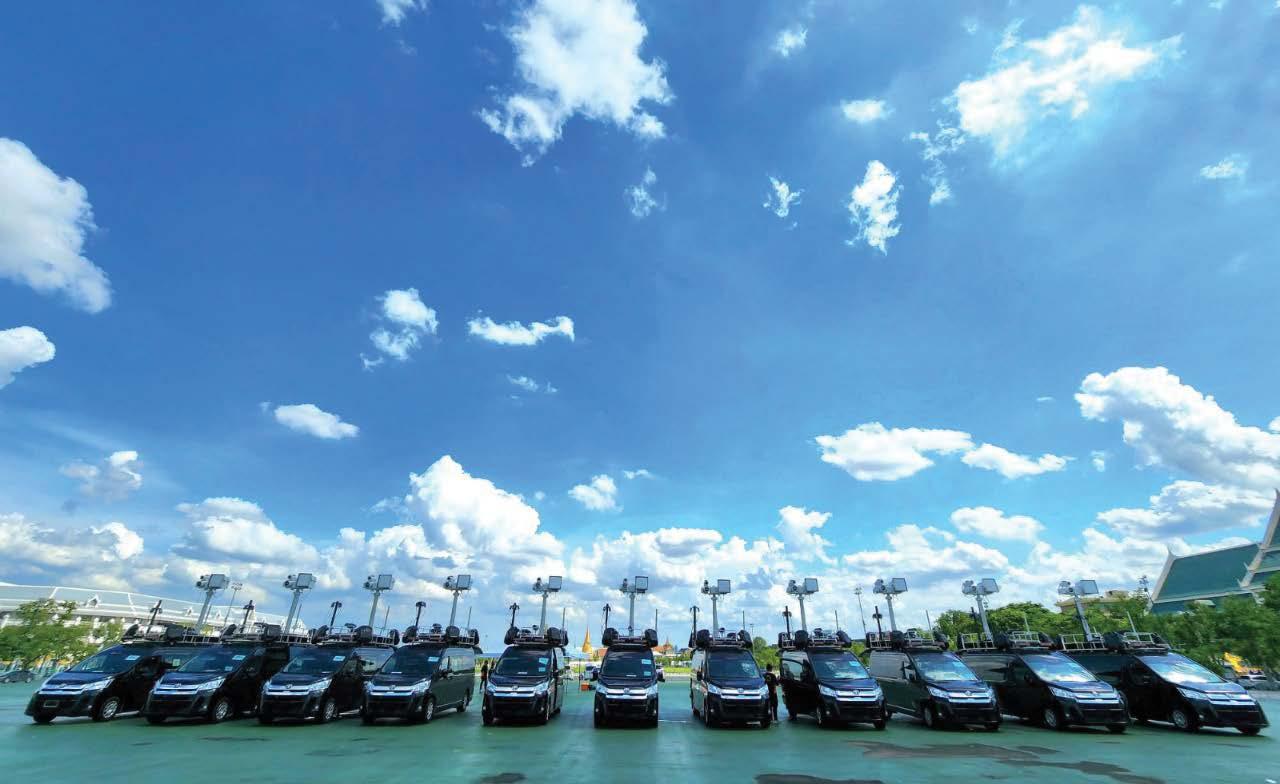

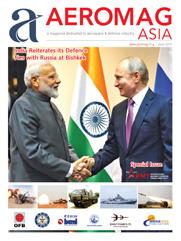







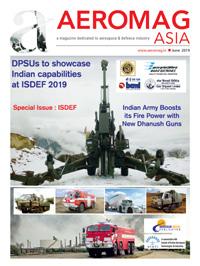



We foresee that Indo Defence will provide us the platform to build relationships with the right people to explain our capabilities and how we can assist their countries to build up their own Anti-drone capabilities. Moreover, using our relevant experiences in providing systems for major events, we are excited to share our solutions for the Bali G20 Summit happening after Indo Defence this year.
What are the immediate and long-term goals of the company? What are the challenges ahead?
We want to continue to be the best-inclass Anti-drone company in this niche but rapidly expanding market and be the world-class partner for advanced C4I and security systems to make life safer. We want to push Anti-drone to the edge where we continually come up with new capabilities such as drone-on-drone and other cost-effective drone defeat solutions to keep abreast with the everchanging new drone technologies.
Our long term goal is to expand our market reach into different parts of the world and provide the confidence needed to protect against any potential drone threats.
As building Anti-drone capability is not just about technology, we foresee three main challenges ahead. First, is having the knowledge, experience and requirements to know the enemy better and faster
than themselves. Second is overcoming regulations, where in most countries, the use of active systems remain greatly controlled which restrict the ability to activate Anti-drone systems whenever necessary. Third, is choosing the right solution and catching up with the fast cycle of drone technology to build an Anti-drone solution that is overall best-inclass and cost-effective to the customer in the long run. There are no silver bullets in building the “perfect” Anti-drone capability. We need to always “fly” faster and better than the “terrorists” could and continue our learning journey to prepare for an enduring battle!
TRD offers you a proven Anti-drone system solution with advanced technology and we aim to be your trusted partner in making life safer.
While talking about the integration of all elements of national security apparatus, the Air Chief Marshal (ACM) VR Chaudhari, Chief of the Air Staff, Indian Air Force, recently said about an ‘All of the Nation’ approach, we cannot be restricted to only joint operations of the armed forces. “The legacy mindset that the aerospace domain only becomes relevant when conventional war breaks out has been proven wrong. We have seen this in the Balakot and post Balakot periods and the increased air activity along the LAC in Eastern Ladakh. Aerospace power is scalable, and very amenable for signalling. There is adequate scope of employment below the threshold of conventional war. Thus, appropriate resident expertise on aerospace matters needs to be incorporated in decision-making and support bodies when considering response options in both continental and maritime domains,” said the CAS. Speaking to Aeromag on the occasion of the 90th IAF Day, CAS talks about how the force counters Chinese actions in the South East coast, the Agniveer scheme and revamped training programme of IAF, latest updates of indigenisation and the modern challenges in aerial warfare.
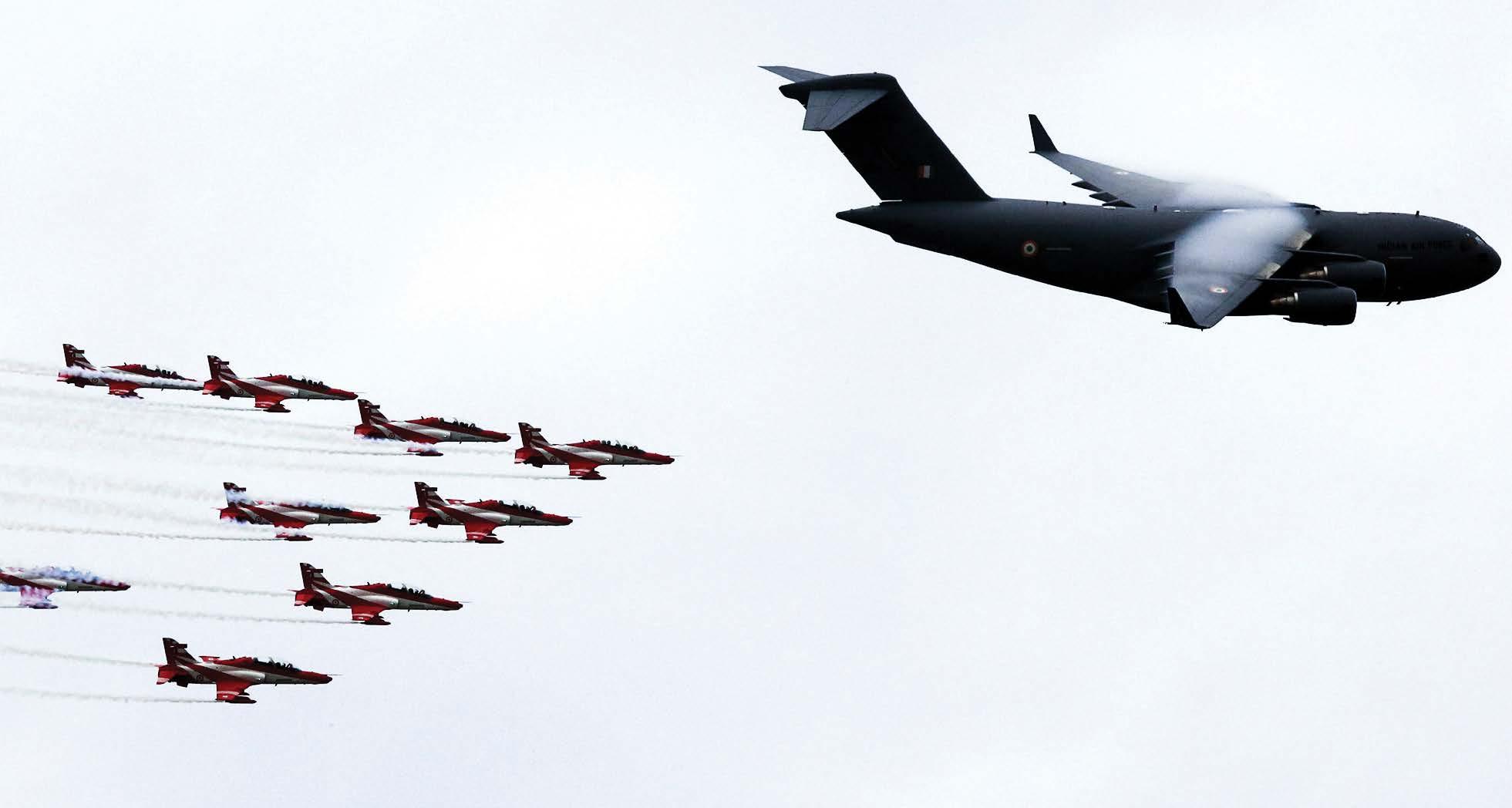

Taking stock of the geopolitical fallout of the political instability and social turmoil in Sri Lanka in the Indian Ocean region, given China’s strong intent and motivation to interfere, do we have to shift our focus now to our South East Coast from the eastern and western border contingencies?
Whilst it is clear that China has the desire, and increasingly, the capability to interfere in affairs in the IOR, so far, it has not had the necessary staying power for military interference. When we talk of the defence forces shifting focus, we must keep this in mind. The disagreement on boundary issues is along the northern borders and not the maritime domain. Neither is there a permanent and contiguous Chinese military presence close to the SE Coast. However, with an eye on the future, the IAF has improved its capabilities in this region with fighter deployments and joint exercises with the Navy.
You have spoken of an ‘All of Nation Approach,’ integration of all elements of national security apparatus. What would be your priorities in promoting synergy and streamlining joint operations among the three services?
When we talk of the ‘All of the Nation’ approach, we cannot restrict ourselves to only joint operations of the armed forces. What I referred to was the incorporation of all relevant departments of the government into evolving a cohesive national response. To a great extent, we have seen this evolve through some empowered multi-ministerial coordination bodies. The legacy mindset that the
aerospace domain only becomes relevant when conventional war breaks out has been proven wrong. We have seen this in the Balakot and post Balakot periods and the increased air activity along the LAC in Eastern Ladakh. Aerospace power is scalable, and very amenable for signalling. There is adequate scope of employment below the threshold of conventional war. Thus, appropriate resident expertise on aerospace matters needs to be incorporated in decision-making and support bodies when considering response options in both continental and maritime domains.
Are you overwhelmed by the onrush of responses to the Agnipath Scheme?
In the changing dynamics of air warfare, how do you address the need for technology intensive training in the overall framework of short-term Agnipath service?
The Indian Air Force has been a popular choice for the youth. The excellent response to the 1st batch of Agniveer is an affirmation of the trust that youth places in the IAF and its ability to transform their life for the better. Yes, we are happy with the response to the Agnipath Scheme.
Air Force is a technology-intensive force. To achieve the requirements of welltrained Agniveers for technology intensive Air Force, we have undertaken to revamp the entire pattern of training. The new pattern of training is a combination of structured and on-the-job training with a short initial training period followed by work experience. Depending upon the demonstrated proficiency, each Agniveer
Vayu will undergo further two sets of upskilling modules. We expect that by progressively exposing our Agniveers to more complex jobs along with upskilling modules, the requirements of IAF will be met.
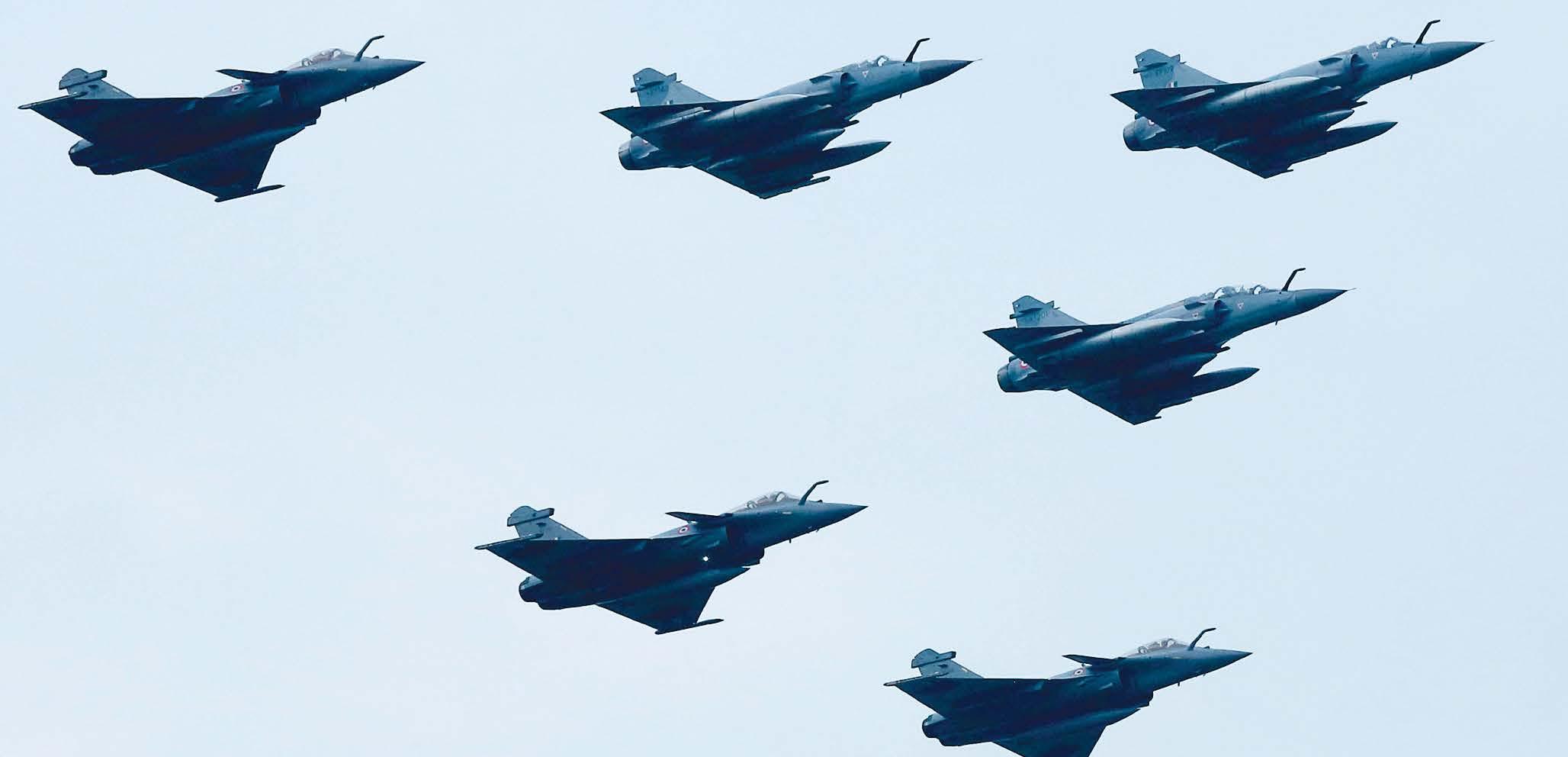
During the structured on-the-job training the focus will be on learning appropriate skills along with foundational knowledge. Modern learning tools and simulators will be used extensively.
The most intricate tasks of repairing complex technical items will remain restricted to the experienced technician. The Agniveer that are retained in the Indian Air Force after their initial four years will be imparted additional training for this purpose.
On the side-effects of the RussianUkraine conflict, does it in any way affect our defence products delivery schedules from Russia or the Western countries? What are our alternatives?
The Russia-Ukraine conflict has not affected the defence product delivery schedules from western countries. The conflict has thus far has had a limited effect in terms of delivery schedules from Russia and Ukraine. However, there has been no effect on our Op capability.
Minor delays in the supply of spares and repairs pertaining to equipment of Russian / Ukrainian origin are being closely monitored. However, it does not have any immediate impact on our readiness. Indigenisation efforts are also being expedited in tandem as a fallback in the longer term. For instance, complex rotables have been identified for ROH /
Indigenisation under the Make-II scheme. For transparency and visibility to Indian development partners, all indigenisation requirements are posted on the IAF website and Srijan defence portal.
Could you share with us your vision on the new domains of warfare for the air warriors on the occasion of the 90th anniversary of the IAF?
The defence services the world over have been structured, manned, equipped, and trained for the conduct of warfare as we have known it in the classical sense. However with time and technological advancement, there has been a growing dependence on networking. Simultaneously, there has been a huge rise in the cost of war, as destructive power of weapons has increased manifold. Furthermore, kinetic action is a clear crossing of the tolerance threshold in most cases, and is easily attributable with attendant consequences of a response.
So, in this backdrop, the cyber domain has emerged as a key domain of warfare. A successful cyber-attack can cause prohibitive, but usually, non-lethal losses, cause a huge loss of functionality or even capability, and serve as a good coercive factor. More importantly, it is difficult to attribute such attacks, and this is what makes them so attractive in No War No Peace situations. Our adversaries have invested a lot in creation of such capabilities. The best defence against such capabilities is a disciplined cadre of air
warriors. This is something we lay great stress on, with a zero tolerance policy. The IAF was the first among the services to implement a pan-India service-specific network, and Network Centric Operations have only grown since then. Cyber defence measures, awareness, procedures, and training are areas of focus. Our systems and procedures are robust, but also subject to constant review and upgrade.
In the same manner, the domain of space is now inextricably linked with nearly all aspects of our operations today. From communications to sensors of all kinds, the dependence on our space assets, and hence their criticality is extremely high. We have a tri-services agency that has been established to focus exclusively on this domain. Nevertheless, as the lead aerospace agency, the IAF has adopted a policy of boosting expertise in this critical domain. We have always maintained that space was but an extension of the air medium. Even today, there are extant technologies that allow for a direct interaction between air and space platforms. But emerging technologies and platforms will erase the difference between the two and permit seamless transits between air and space.
It is imperative that we understand these, adopt a future-oriented outlook and develop such capabilities as well. ‘Near Space’ as the intervening region between air and space will be a crowded area in times to come. And with the ability to dominate it will come a far greater ability
to influence and support space operations. In fact, the domain of air will be critical to controlling the domain of space. Together with other government agencies a composite effort to develop capabilities to safeguard our interests has been put in place. The IAF will be in the vanguard of this process. Air warriors today need to understand this, train, plan and execute so that they may master it tomorrow.
On the threshold of the tenth decade of the IAF, could you spell out 10 unique highlights, updates to look forward to for the Indian Air Force visa-vis the force optimization drive and indigenisation of defence production?
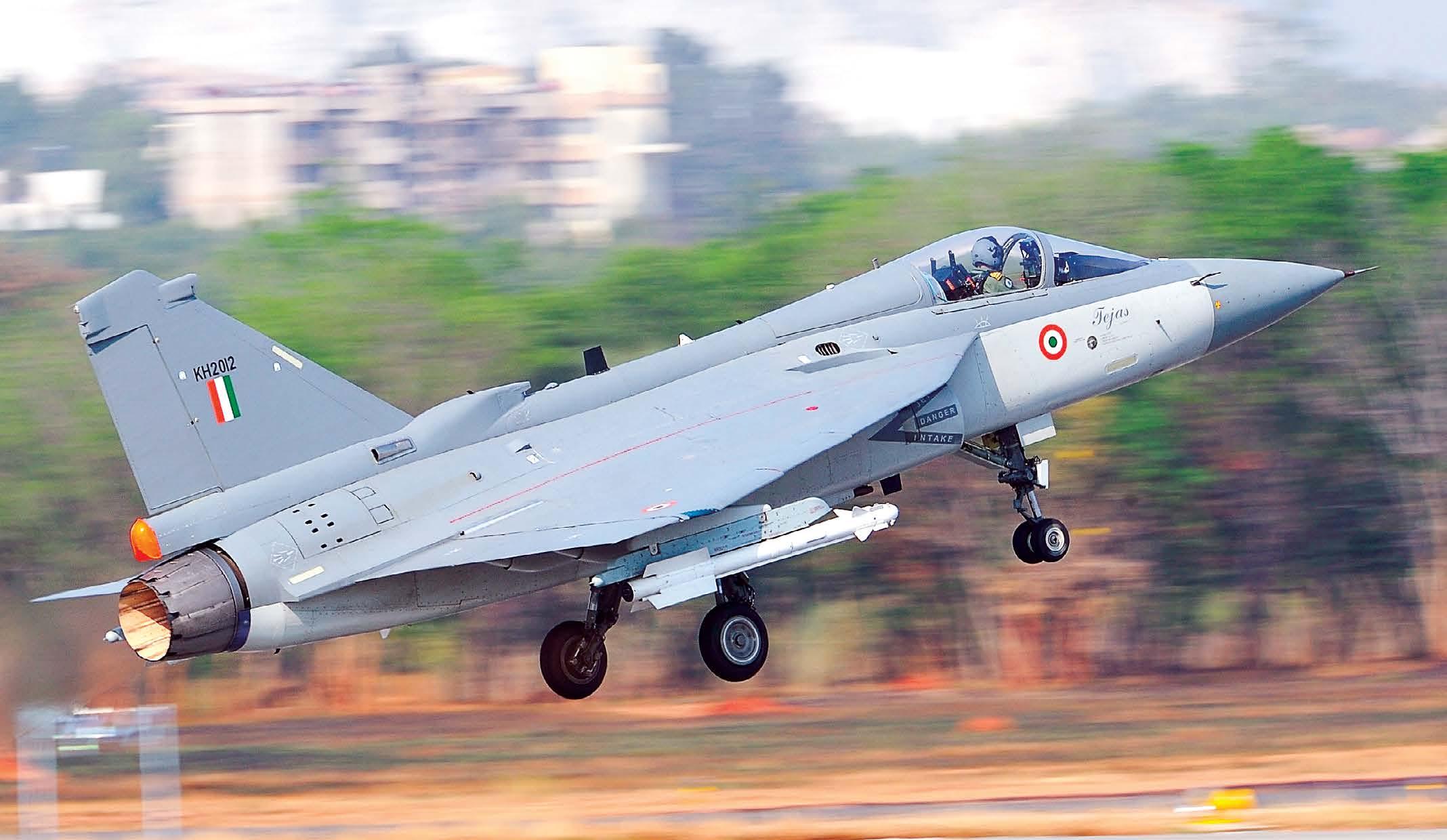
The indigenous LCA (Tejas) programme has now matured. 16 IOC version aircraft and 14 FOC version aircraft are with the IAF. Delivery of the recently contracted 83 aircraft will commence by January 2024 and these will be used to resurrect some of the number-plated Squadrons. The major improvements include incorporation of Active Electronically Scanned Array (AESA) Radar, Electronic Warfare (EW) suite, Beyond Visual Range (BVR) missiles and mid-air refuelling capabilities. IAF is also tirelessly working to enhance the operational capability of the LCA by installing newer systems and integrating additional weapons.
The two Squadrons of the Rafale are operational at their respective bases. Now we have shifted focus on the MRFA programme and extensive discussions
are ongoing within the prospective participants. The entire case is being realigned to ensure continued relevance of the platform and its capabilities hold us in good stead for at least the next four decades.
The indigenous development of LCA Mk 2 and AMCA is being progressed through DRDO and detailed deliberations are underway. Suffice to say that both the programmes have gained sufficient momentum and as soon as certain technical details are straightened out, both these projects will be launched in the near future.

The IAF transport fleet is well rounded and the C-295 aircraft with a major Makein-India component will allow the IAF to replace its ageing Avro aircraft. On the rotary wing front, the IAF has managed to do rather well. Deliveries of attack and heavy lift helicopter for 22 Apache AH64E and 15 Chinook CH-47 have been completed with the formation of two units for each type. The Russian Mi-17 V5 programme has also been completed with 130 plus helicopters having been delivered. The IAF has also acquired a large number of the indigenous ALH (Dhruv) helicopters. We also plan to acquire the Indian MultiRole Helicopter currently being designed and developed by HAL. Upgrade of the Mi-17 legacy helicopters is also in progress. Recently, the IAF has inducted the Light
Combat Helicopter in the Limited Series Production version. Upon successful induction, further procurement of this versatile platform will be initiated. The IAF plans to acquire 55 more LCH in the near future. Capability enhancement of the helicopter fleet is an ongoing process with IAF. Induction of new missiles, EW systems, systems to allow operations in a degraded visual environment, combat SAR capability and networked operations are either ongoing or in the pipeline.
Since their induction, the existing three Phalcon-based IL-76 AWACS aircraft have been fully operationalised, networked and integrated. In addition, all three Embraer E145 platforms with the indigenous AEW&C development by DRDO have been delivered and operationalised. Additionally, the next generation AEW&C based on the A-321 will be developed by DRDO. IAF is also procuring Medium Power Radar (Arudhra), High Power Radar, Ashwini Radar and Mountain Radar for ensuring a gap free AD Coverage of its airspace.
To augment its mid-air refuelling capability, the IAF is progressing the case for procurement of six FRAs. To make the project economical, we may also go in for pre-owned FRAs as long as they meet the operational requirements. As this process will take some time, a case for leasing one FRA to augment our training requirements
has also been initiated.
Special focus is being given to enhancing our UAS capabilities across the spectrum. The IAF has been designated as the lead service to progress the procurement of MALE UAVs for all three services.
The long-pending requirement of upgrading the existing fleets of Heron UAV is now being re-aligned to Make-inIndia provisions. Technical discussions are on-going with the OEM and a prospective Indian agency to find a common path ahead.The advent of small, mini and micro UAVs has opened up a new challenge and to counter such threats, we have taken multiple approaches. All the Counter UAS systems are designed and developed in India, with hand-holding and guidance from the IAF. These systems are gradually being inducted. The IAF has an additional requirement of 106 BTAs (Basic Trainer Aircraft). Towards this, HTT-40 from HAL will be inducted soon.
The IAF had opted for the indigenous Akash SAM systems, eight squadrons of which have been inducted into service, with seven more in the process of induction. In addition, DRDO’s project to develop and deliver the MR-SAM is progressing satisfactorily with the induction of three Sqns having been completed. The IAF has also operationalised the S-400 system and the rest are being delivered as per schedule.
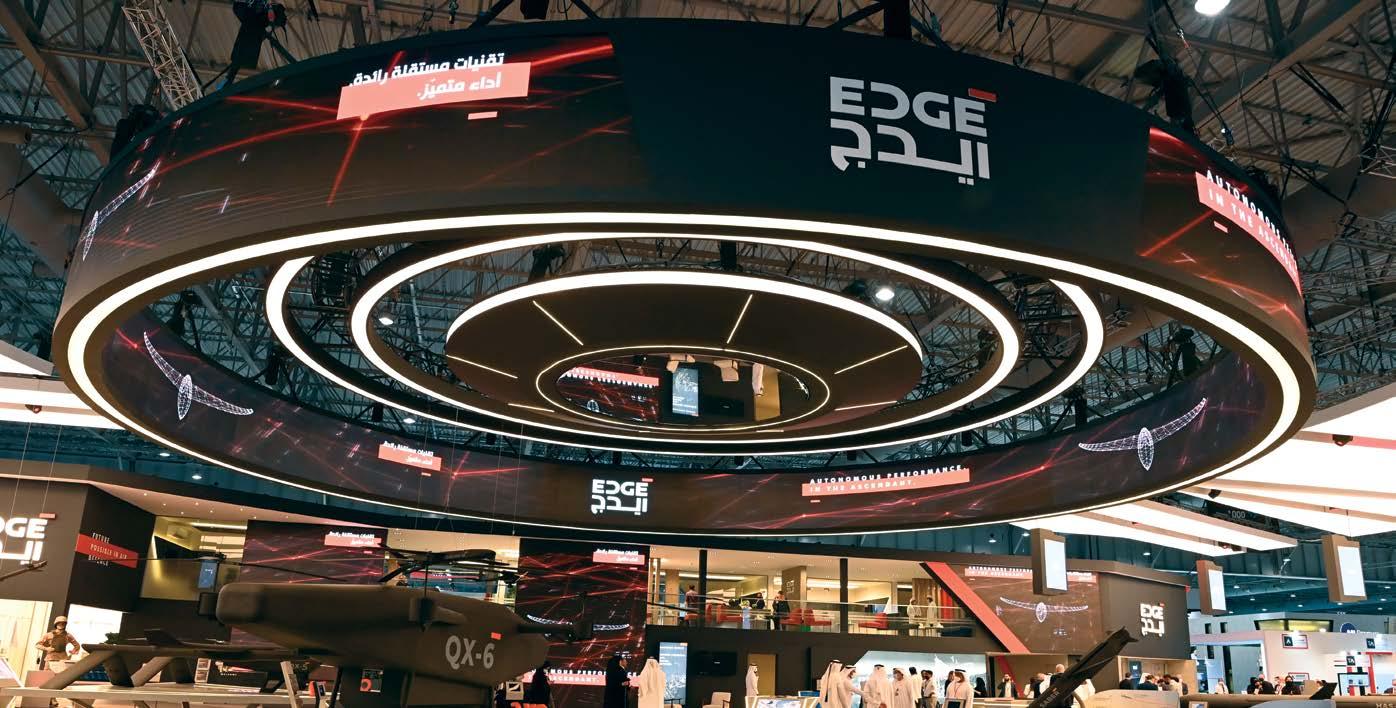
& Weapons, Platforms & Systems, and Electronic Warfare & Cyber Technologies.
Mansour Al Mulla Managing Director & CEO, EDGE Group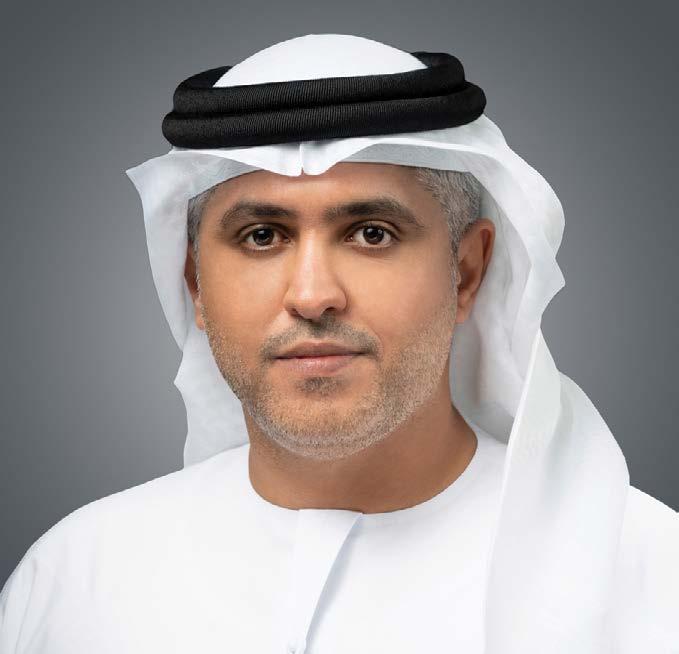
EDGE Group PJSC (‘EDGE’ or the ‘Group’) will be participating in the INDO DEFENCE Expo and Forum, taking place in Jakarta from 2 to 5 November. As one of the world’s top 25 advanced technology groups for defence and beyond, EDGE has seized the opportunity of exhibiting at the major international industry event to showcase its products and solutions to the Indonesian and other Southeast Asian markets.
This will be EDGE’s first participation in Indo Defence, where it aims to strengthen existing partnerships, to forge new ones within the local and regional defence ecosystems, and to showcase an extensive range of advanced capabilities and technology solutions.
Mansour Al Mulla, Managing Director, and CEO of EDGE, said: “This is the first time we are exhibiting at INDO DEFENCE, with a strong presence showcasing EDGE’s advanced capabilities through 10 of our prominent entities and underscores the strategic importance of the Indonesian market to us. We are confident that our participation will enhance existing key export markets, and further open new ones. It also reinforces EDGE’s strategy of developing mutually beneficial partnerships to broaden our own supply chain in the long-term.”
10 of EDGE’s entities will display approximately 60 advanced solutions and products covering the domains of Missiles
From the Missiles & Weapons cluster, HALCON, a leader in the manufacture of precision weapon systems and solutions, will showcase its multi-range THUNDER and DESERT STING air-to- surface precision-guided munitions, and SHADOW series of loitering munitions. AL TARIQ, a world-class manufacturer of missionproven precision-guided munitions, will be displaying its AL TARIQ-S (Standard Range) and AL TARIQ-LR (Long Range) advanced, modular precision - guided munitions, along with their Seeker options.
Additionally, CARACAL, a global small arms manufacturer, will display its CAR 816 assault rifle in 7.5”, 10.5”, and 16” barrel lengths in addition to a 10.5” and 14.5” Indonesian configuration. The CMP 9 submachine gun in standard and short versions will be showcased as well as its CARACAL EF combat pistol, and CSR 338 and CAR 817 DMR sniper rifles.
Leading munitions company, LAHAB DEFENCE SYSTEMS, will display its full range of medium and large calibre munitions, including its 40x53mm High Velocity, High Explosive grenade launcher munitions, 60mm, 81mm, and 120mm mortars, artillery munitions, 155mm Extended Range, Full Bore, and 122mm rockets, and its MK series of generalpurpose aircraft munitions.
LAHAB LIGHT AMMUNITION will display its full range of small calibre ammunition.
From the Platforms & Systems cluster, NIMR, the UAE’s leading producer of
armoured vehicles and battle-proven land platforms, will showcase its AJBAN Mk2 4x4 ballistic and blast protected light tactical patrol vehicle, HAFEET Mk2 6x6 armoured vehicle, and JAIS 4x4 Mine-Resistant Ambush Protected (MRAP) vehicle. ADASI, a leader in the manufacture of autonomous systems and services, will display its QX-1, QX-2, QX-3, and QX-4 series of loitering munitions.
Additionally, ADASI will display the GARMOOSHA rotary-wing unmanned aerial vehicles (UAVs), as well as its Rash 1, Rash 2-H, and Rash 2-M precision-guided munition systems. Shipbuilder,ADSB, will display its 160 ITEP (Inshore Tactical Engagement Platform), 120 FIP (Fast Inshore Platform), and 510 OPV (Offshore Patrol Vessel).
EDGE’s Electronic Warfare & Cyber Technologies cluster capabilities will be represented by UAE’s leading Electronic Warfare and Intelligence solutions provider SIGN4L’s GNSS anti-jamming system, GPS-PROTECT, its sophisticated NAVCONTROL-G spoofing system, and V- PROTECT radio frequency (RF) communication jamming system.
Additionally, the cluster will be displaying KATIM’s ultra-secure communications solutions and BEACON RED’s security and intelligence training, cyber solutions, and testing capabilities.
Attendees of INDO DEFENCE can visit EDGE and its portfolio companies at the UAE Pavilion on stands A 005 / A 045 at JIExpo Kemayoran in Jakarta, Indonesia.
for the SU 30 MKI aircraft of the IAF. The IAF intends to indigenise tyres of all fleet of aircraft and is now looking up for vendors to develop tyres for various aircraft. MRF
Ever since its inception around seven and a half decades ago, MRF Limited, based out of Chennai, has emerged as one of the most trusted tyre brands in India with its core business is Automobile & Aviation tyres. MRF is the largest manufacturer of tyres in India and has the widest range of tyres from two wheeler to Aero Tyres. With over 10 factories in India, MRF has a total revenue of 2.35 Billion USD.
MRF is the most preferred tyre by automobile manufacturer in India. MRF is one of the leading suppliers of tyres to the Indian Armed Forces and the only manufacturer of Aviation tyres for Indian Air Force. MRF has been actively involved in developing Aviation tyres for India’s Armed Force and also in developing special application tyres. These tyres are being used by various customers across the globe.
Earlier in March, has achieved a significant milestone when it supplied the nose wheel tyres to the aircraft deployed by the IAF. MRF has also been supplying
the main wheel tyre for SU 30 MKI, which is considered as the most advanced fighter aircraft in the IAF fleet.
Taking a cue from past supplies, the indigenisation of nose wheel tyres for SU 30 MKI was also made by MRF. After going through successful trials, the company could supply more nose wheel tyres for the fighter aircraft.
The ‘MRF Aeromuscle Tyre’ has been indigenously developed by the company for the SU 30 MKI aircraft of the IAF. MRF has supplied more than thousand units of Aeromuscle range of main wheel tyres for SU 30 MKI fleet.
MRF, after meeting all the stringent norms laid by the various authorities, has been supplying tyres for Chetak range helicopters since 2008. The company has supplied more than 2,000 tyres for Chetak helicopters.
After this successful stint, the company started working on developing the main wheel tyres for fighter aircraft and came up with Aeromuscle tyres for fighter aircraft. MRF has now become one of the few global OEMs that supply tyres to the
defence industry.
The IAF intends to indigenise tyres of all fleet of aircraft and is now looking up for vendors to develop tyres for MiG 29 UPG and IL-76 aircraft fleets. This will soon be followed by the development of tyres of other aircraft fleets that are operated by the IAF. MRF aims to tap potential in this regard.
MRF is also exporting its tyres to various countries across the globe. MRF has got its own network of sales offices across the country and the widest network of dealers in India. The company has its own stateof-the art R&D facility at Chennai which also include aircraft tyres testing facilities.

MRF is also diversified into various other business activities like Pretreads (Retreading business), Funskool Toys, MRF Vapocure paints, MRF Sports Goods division. MRF is also a very active participants in various rally activities across the world. The company has won the Asia Pacific Rally Championship for several years and are currently very active in European Rally Championship.

The BrahMos, billed as the world’s fastest projectile of its kind, it comes with a lethal trident-like combination of speed, precision plus power and has emerged as the ultimate game-changer for India. It is one of the most successful missile programmes in the world which has fortified India’s deterrence power in 21st century. The new BrahMos unit set up in the Lucknow node of Uttar Pradesh Defence Industrial Corridor (UP DIC) will cover over 200 acres and produce the new BrahMos -NG (Next Generation) variant.
“Our goal will be to achieve significant technological prowess with continuous upgrades for modern-day network-centric warfare operations. Our vision is therefore to be the world leader in the field of Cruise Missile Systems, excelling through R&D efforts in design and upgrades and delivering a stateof-the-art weapon complex,” said Atul Dinkar Rane, Chief Executive Officer and Managing Director, BrahMos Aerospace. Speaking to Aeromag, he talks about the operations and future plans of the company.
A naval variant of the advanced supersonic BRAHMOS cruise missile was test-fired from a stealth guidedmissile destroyer of the Indian Navy recently. What are the highlights of the new variant?
BRAHMOS is a very versatile weapon. It has continued to evolve in terms of its overall capability and functionality. We have been constantly upgrading and enhancing various technologies, systems and sub-systems involving the supersonic cruise missile in order to achieve higher
capabilities (for the weapon) and further bolster the capabilities of our Armed Forces. The successful test firing of an advanced BRAHMOS anti-ship missile variant from Indian Navy’s guided missile destroyer INS Visakhapatnam on January 11, 2022 is a reflection of these advancements that we have achieved over time.
India recently inked the $375 million contract to export BRAHMOS supersonic cruise missiles to the
Philippines. Could you talk more about the project?
We have signed this landmark deal with the Dept. of National Defence of the Republic of Philippines to supply shorebased anti-ship BRAHMOS systems to that nation. The historic deal was signed on January 28, 2022. This is the first export deal involving the BRAHMOS weapon system. BRAHMOS has thus become India’s first full-scale major weapon system to be exported to a foreign nation. Under this deal, BrahMos
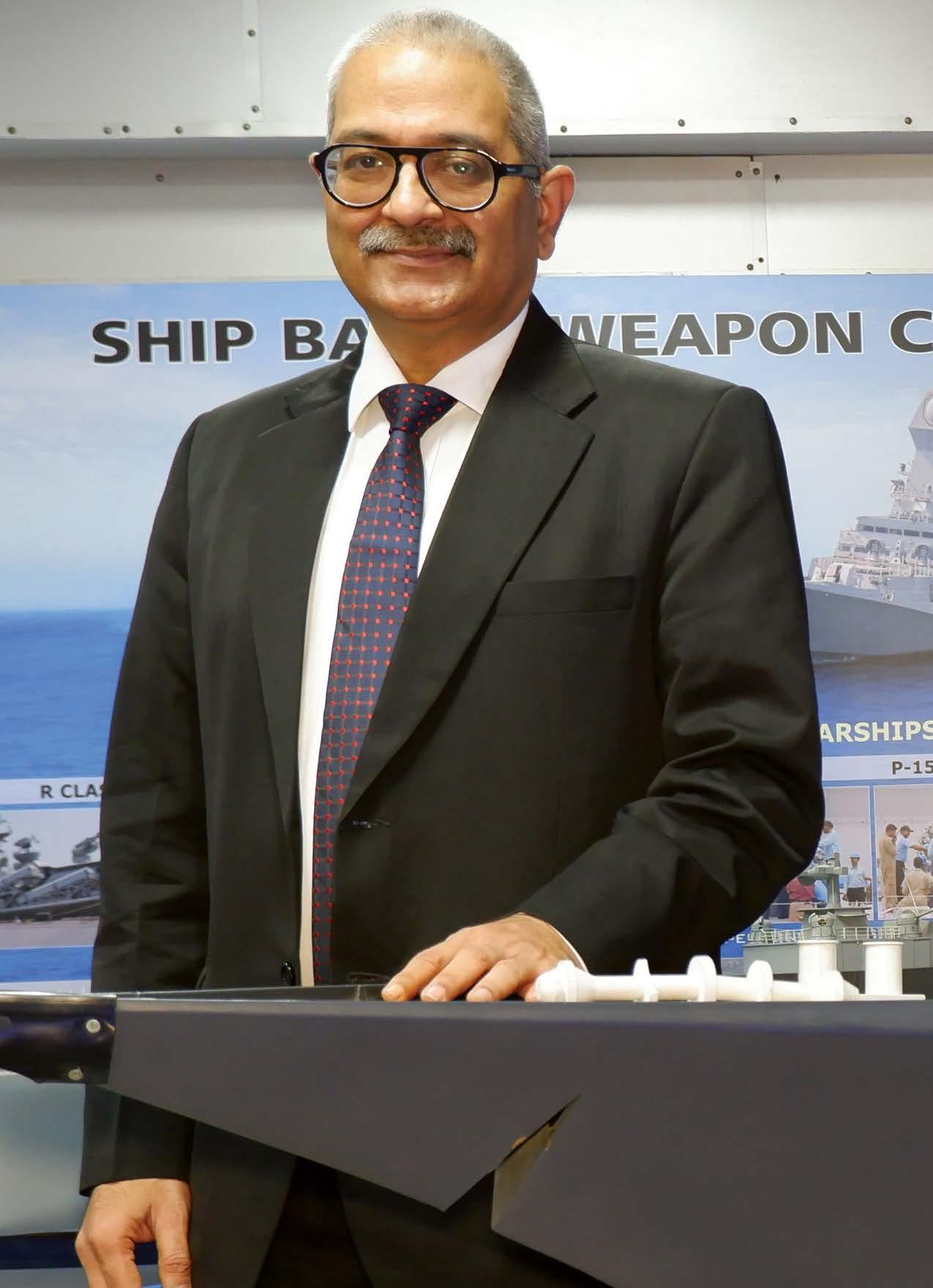
Aerospace (BAPL) is going to deliver the shore-based BRAHMOS anti-ship strike weapon to the Philippines for coastal defence purpose.
How do you look at the export prospects of the BrahMos missile? Could your share the details of your export business?
The multi-million dollar contract signed between the Department of National Defence of the Republic of Philippines and BrahMos Aerospace Private Limited (BAPL) will pave the way for more such missile exports. The contract is an important step in India’s plan to become major player in arms exports. Some more countries in South East Asia and in the Latin American region have expressed their strong interest in the BRAHMOS Missile System. We are advancing in our discussions with all of them for any potential export order. We at BrahMos Aerospace are fully prepared and committed to fulfill all export related demands as and when they arise.
Could you talk about the plans regarding Brahmos-II? What progress have we made regarding the hypersonic cruise missile project?
The BRAHMOS, billed as the world’s fastest projectile of its kind, it comes with a lethal trident-like combination of speed,
precision plus power and has emerged as the “ultimate game-changer” for India. The missile system is being evolved through constant interaction with our design agencies, DRDO, India and NPOM, Russia. The technology bricks are being developed and then a configuration will be finalised. BRAHMOS-II will be a larger force to reckon with in the future.

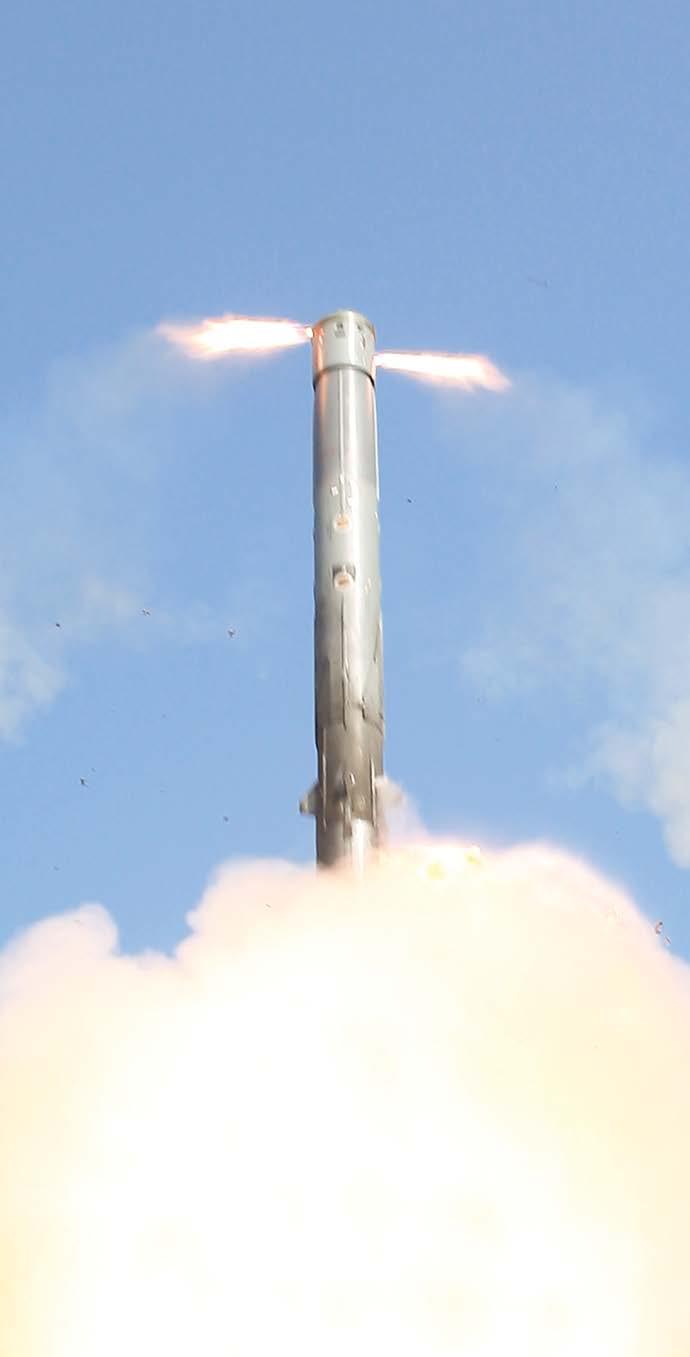
Could you talk about the Defence Technology and Test Centre and BrahMos manufacturing centre that will be established in Lucknow?
Indian Defence Minister Rajnath Singh laid the foundation stone for Defence Technology & Test Centre and BRAHMOS Manufacturing Centre, established by Defence Research & Development Organisation (DRDO) in Lucknow, Uttar Pradesh on December 26, 2021. The new BRAHMOS unit set up in the Lucknow node of Uttar Pradesh Defence Industrial Corridor (UP DIC) will cover over 200 acres and produce the new BRAHMOS-NG (Next Generation) variant.
We will work in close coordination with DRDO to set up this new missile production unit over the next 3 to 4 years following which it will be attested for integration and production of the BRAHMOS missile. This new missile, having smaller, lighter and smarter
dimensions, would be designed for deployment on a wider number of modern military platforms.
Could you shed some light onto BrahMos’s indigenisation efforts and support given to Aatmanirbhar Bharat? How do you association with private industry in defence manufacture?
BRAHMOS supersonic cruise missile is a testimony of India’s defence potential and Prime Minister’s Atmanirbhar Bharat resolve. BRAHMOS has achieved historic milestones in the flagship “Make In India” programme by successfully indigenising major sub-systems, thus proving the competency of the missile with advanced features. It has taken Indian contribution to seventy percent. All launcher systems for the weapon are also being manufactured domestically. 100% of ground support equipment for the weapon complex are being made in India.
BrahMos Aerospace, in close coordination with DRDO, JV partners and industrial partners have achieved many breakthroughs in developing and successfully testing some of the critical technologies.
The JV entity has created a robust defence ecosystem in the country by forming a “Missile Industrial Consortium” (MIC) which involves over 200 small and
medium Indian public and private defence sector enterprises and institutions that have been making tireless efforts to develop, produce and supply various valuable components and parts for the versatile BRAHMOS Weapon System inlcuding a world-class integration, and check-out facilities with stringent quality control. By establishing such a huge defence-supply chain, BrahMos remains at the forefront of defence indigenisation.


What are the expansion plans of BrahMos Aerospace in terms of R&D and manufacturing facilities?

The BRAHMOS Manufacturing Centre is a modern, state-of-art facility in the

Lucknow node of Uttar Pradesh Defence Industrial Corridor (UP DIC). The centre will be dedicated to manufacture the BRAHMOS weapon systems. Subsequently, it will also cater to the production of the new under design BRAHMOS-NG (Next Generation) variant, which will carry forward the lineage of the BRAHMOS weapon system.
Could you share with us your vision and priorities during your term at the helm of BrahMos?
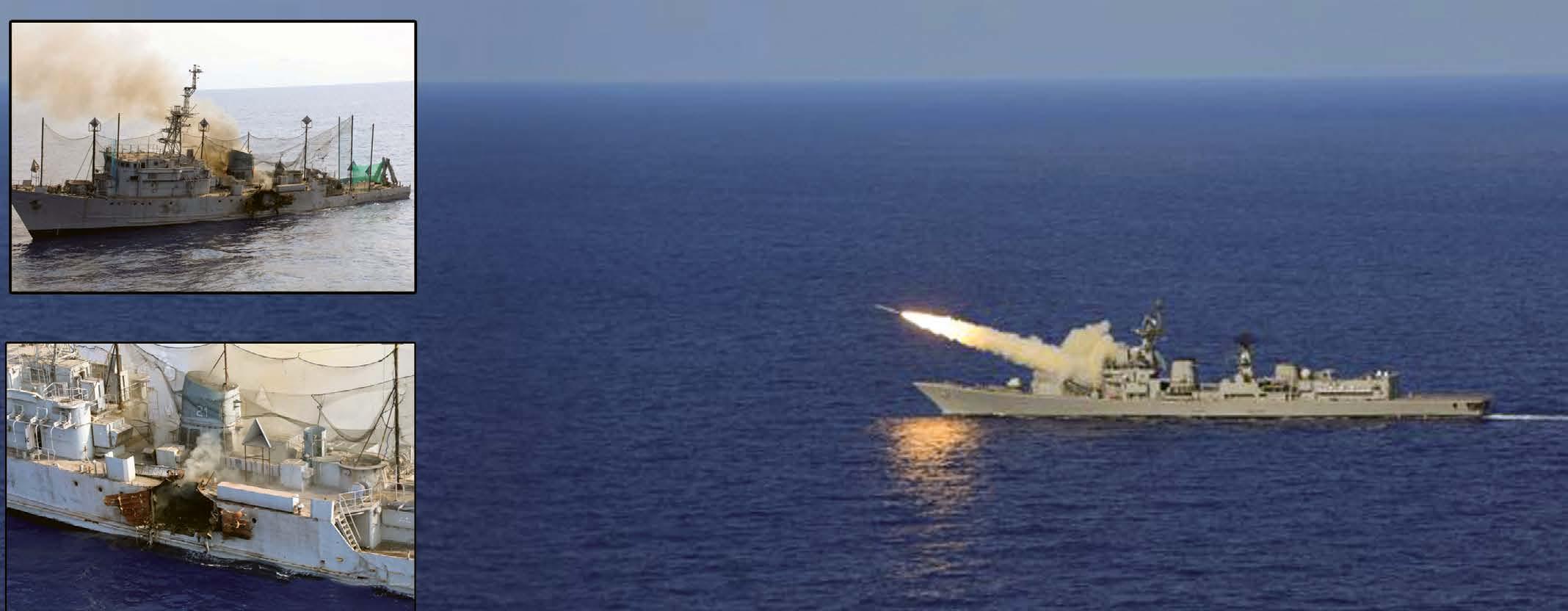

BRAHMOS, as the most formidable deterrent weapon, has completely redefined modern warfare strategies.
It is one of the most successful missile programmes in the world which has fortified India’s deterrence power in 21st century.
Our goal will be to achieve significant technological prowess with continuous upgrades for modern-day networkcentric warfare operations. In terms of futuristic developments, work is advancing on the smaller, lighter variant of the weapon -- BRAHMOS-NG (nextgeneration). Our vision is therefore to be the world leader in the field of Cruise Missile Systems, excelling through R&D efforts in design and upgrades and delivering a state-of-the-art weapon complex.

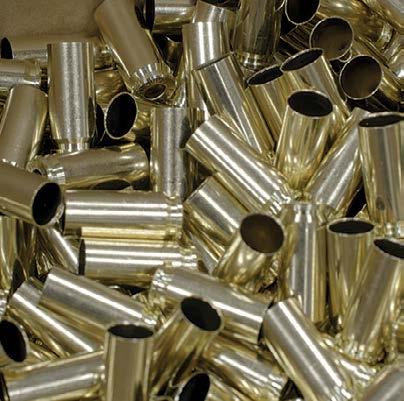

Defence Minister Rajnath Singh presented awards for Excellence in Defence and Aerospace to Hindustan Aeronautics Limited (HAL) in the Institutional and Individual/Team categories on the side lines of DefExpo 2022 at Gandhinagar, Gujarat.


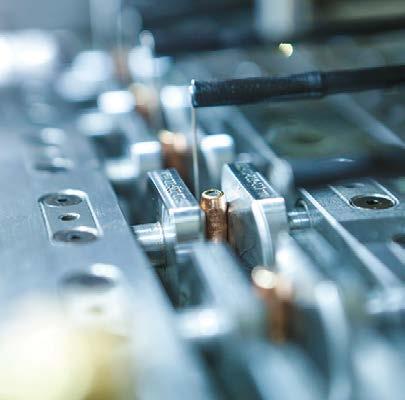


HAL received “Raksha Anveshan Ratn” award for development of Indigenous
Automatic Flight Control System (AFCS) for the Light Combat Helicopter (LCH) in the Institutional category and for design and development of Radio Altimeter with high range and accuracy for Su 30 MKI aircraft in the Individual/Team category.
HAL also received “Raksha Srijan Ratn” award for design and development of Auxiliary Power Unit (GTEG-60) for AN 32
aircraft in the Individual/Team category. HAL CMD, C B Anathakrishnan and officials received the awards from the Defence Minister during the Bandhan programme at DefExpo.
“Raksha Anveshan Ratn” Award is given for excellence in innovation and “Raksha Srijan Ratn” is awarded for excellence in Indigenisation.
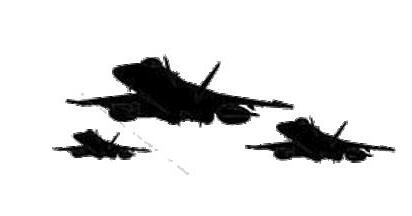
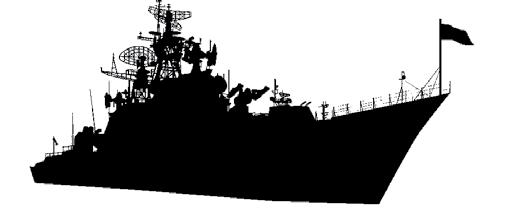

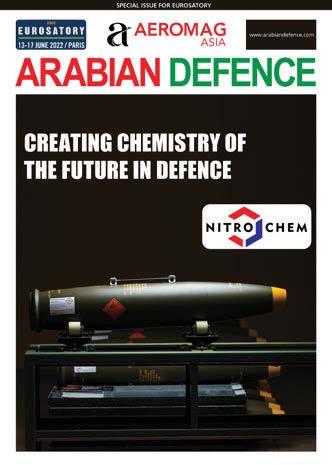
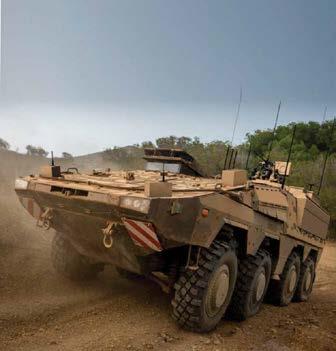
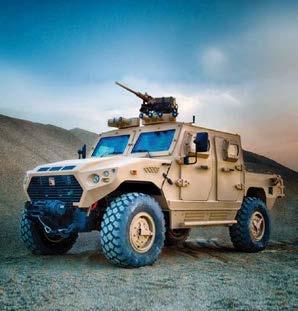


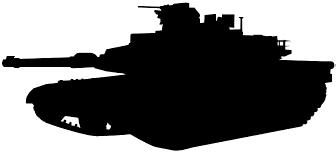



As Saudi Arabia prepares to fly 300 million passengers by 2030 and opens routes to become the leading aviation hub in the region, ensuring passengers travel safely, sustainably and on time will be a fundamental detail to ensure success.
Assaia has worked with international hubs to enable them to deliver on this simple but critical mandate. SeattleTacoma International Airport (SEA) served 36.2 million passengers and flew 498,741 metric tons of air cargo in 2021. Working with SEA and Alaska Airlines, Assaia’s camera vision AI has decreased the average aircraft turnaround time by 12%, meaning passengers get to and from their destination on time and more aircraft can take off from the airport.
With delays being a main source of
frustration for passengers, tracking the events using Assaia resulted in 25% reductions in ground delay minutes. Alaska Airlines is increasingly becoming known for being one of the most on time airlines in North America.
The roughly 45 minutes from when an aircraft lands till it takes off is known as the “airport black box”. During this time, over 300 tasks need to be completed by more than 75 different people. In most cases, there is limited visibility of these actions or interactions leading to preventable delays estimated to cost $48bn per annum.
Assaia’s mission is to use artificial intelligence to give airports and airlines control to predict, respond and automate turnaround operations so that airlines can turn around aircraft and airports free up gates faster. Essentially, turning the black

box into a glass box.
Assaia has proven how this visibility we provide via camera vision and AI has led to fewer delays, more aircraft being able to land and take off, and importantly, a clear overview of safety events and sustainability metrics. SEA reduced their CO2 emissions by 32% using Asssia’s monitoring and alerts.
With the United Nations confirming an aviation net zero goal by 2050 and many airlines and airports losing faith in carbon offsetting, Assaia’s solution will become an essential part of ensuring the aviation ecosystem can reach these targets.
To learn more about Assaia, visit - www.assaia.com or contact - info@assaia.com















































Boeing will be showcasing its advanced capabilities to regional customers at the Indo Defence 2022 show including the latest and most advanced version of the F-15.
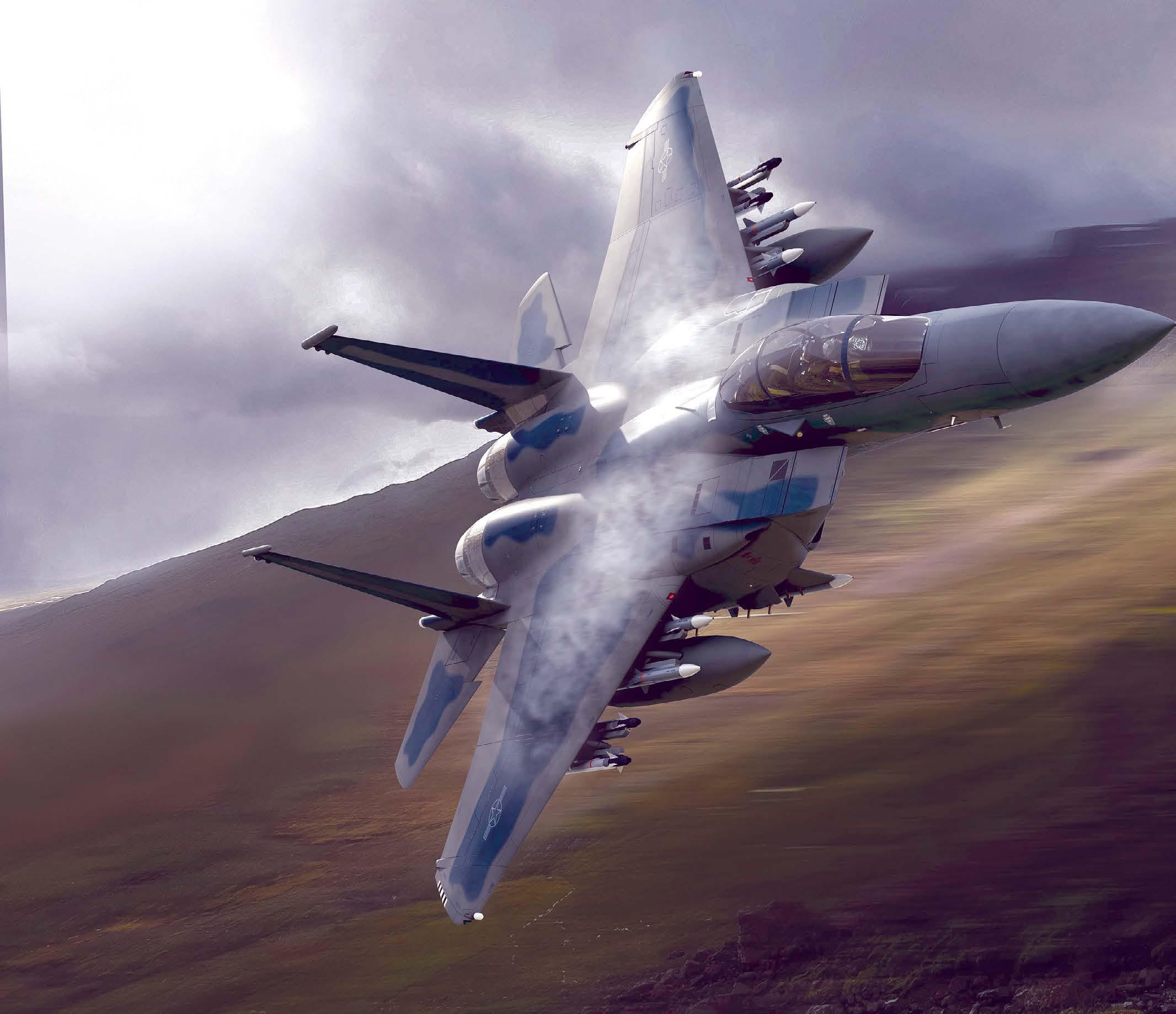
“We’re excited to participate at Indo Defence 2022, engage with our customers on their existing and future needs, and highlight how Boeing can offer advanced defense, services capabilities and capacity building to match those needs,” said Alex Feldman, president of Boeing Southeast Asia. “As the largest economy and country by population in ASEAN, we continue to support the development of aerospace and defense industries in Indonesia.”
Boeing’s exhibit at Hall D, #125, will display its range of capabilities in multi-role fighter aircraft, vertical lift platforms, unmanned systems and commercial-derivative platforms, in addition to nextgeneration satellite communication technology, services, world-class sustainment and training. This includes:
• F-15EX, the world’s most advanced jet fighter that delivers more payload to the fight, more speed to the target, and more range than any fighter in the world.
• CH-47 Chinook, the most advanced, affordable, battle-tested heavy-lift helicopter in the world that is uniquely suited to meet the various missions of militaries across the world, including cargo/troop transport, humanitarian, special operations, casualty evacuations, and search and rescue.
• AH-64E Apache, the most advanced, combatproven attack helicopter ever to enter production and already in operational service with the Indonesian army.
• Integrator, an unmanned aircraft system (UAS) that offers multi-mission, long-endurance UA that carries custom payloads for intelligence, surveillance and reconnaissance (ISR) and in service around the region.
• E-7 Airborne Early Warning & Control (AEW&C), a combat-proven weapon system that provides powerful multi-domain surveillance, communications, and networked battle management capabilities.
• P-8, a multi-mission maritime patrol aircraft, excelling at anti-submarine warfare, antisurface warfare, intelligence, surveillance and reconnaissance and search and rescue.
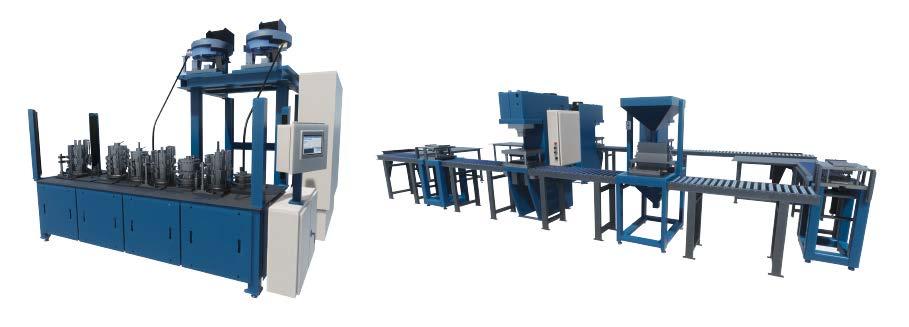


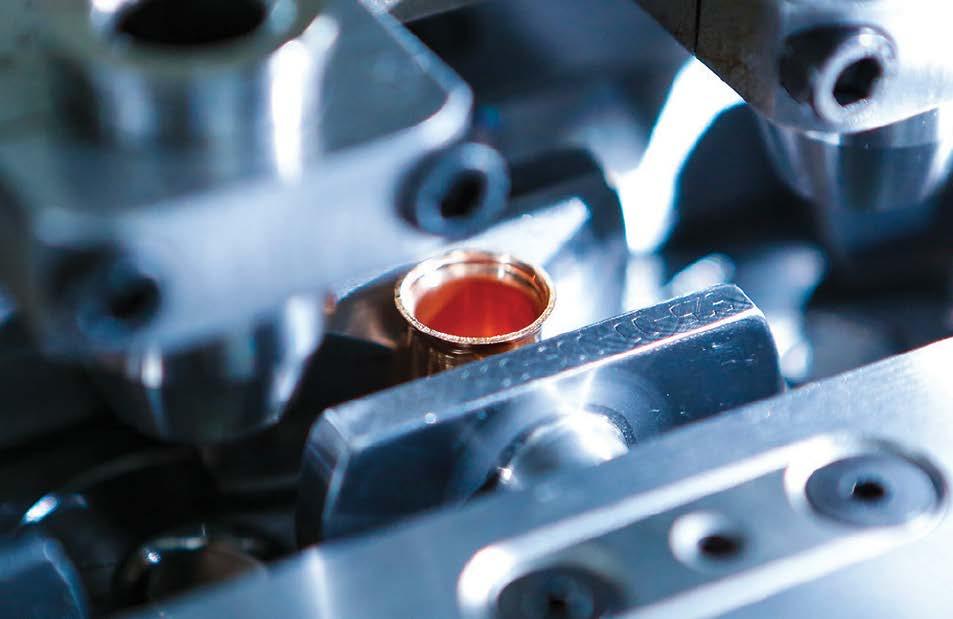
specific needs and provide true production
D&M Ammunition Manufacturing Solutions brings to Indonesia and Southeast Asia its unmatched experience in providing turnkey ammunition and primer manufacturing solutions. The company, which is exhibiting in the US Pavilion at Indodefense 2022, is the world leader in providing turnkey ammunition and primer manufacturing solutions to both government and private entities. With
worldwide headquarters in Tampa, Florida and state-of-the-art facilities in Cabot, Arkansas, D&M’s operations comprise a total of over 75,000 sq ft dedicated to design, engineering, manufacturing, and testing. James B Jones, the company’s VP of Business Development, said that more than just ammunition manufacturing equipment suppliers, D&M Ammunition Manufacturing Solutions has the depth and breadth of experience to understand

customer’s specific needs. “Our team of over 80 professionals represents over 500 years of combined ammunition industry experience. We provide true production systems integration, working with our customers every step of the way, from factory layout and facilities blueprints, raw material sourcing, QC procedures and training, to long-term technical support,” he said.
D&M Ammunition Manufacturing
With over 500 years of combined ammunition industry experience, US based and headquartered, D&M Ammunition Manufacturing Solutions, has the depth and breadth to understand customers’
systems integration. The company has put its unmatched ammunition industry experience to use in successfully designing and building some of the most advanced ammunition factories around the globe, for both private and government entities.Centerfire Projectile Manufacturing process Centerfire Case Manufacturing Line of Equipment Centerfire Loading, Assembly, Packing Line of Equipment Centerfire Projectile Manufacturing Line of Equipment.
Solutions is one of the only companies in the world that offers turnkey solutions for the manufacture of boxer primers. Capabilities include the design of metallics manufacturing, chemical composition preparation, and primer assembly equipment and solutions.
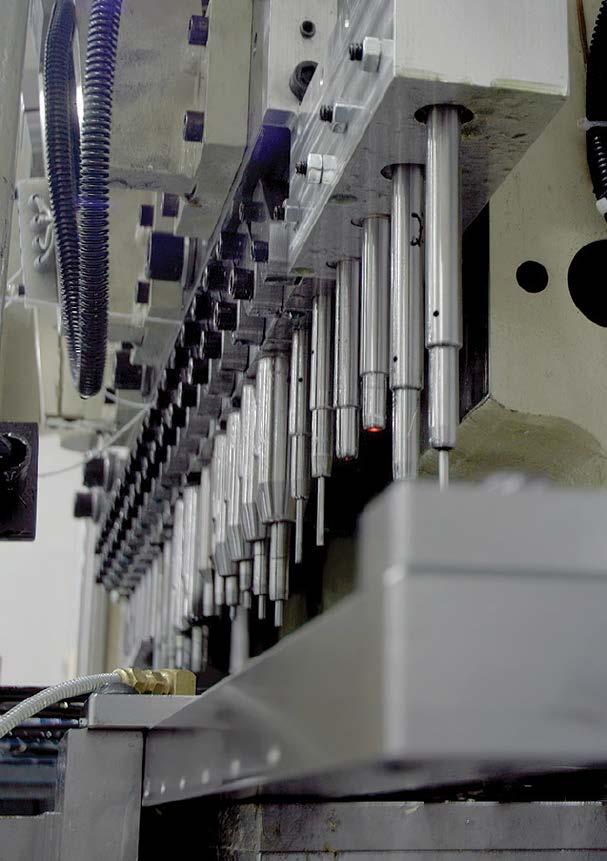
“D&M has successfully designed and built some of the most advanced ammunition factories in the world,” said James Jones. “We look forward to discussing solutions with IndoDefense attendees.”
D&M Ammunition Manufacturing Solutions will be exhibiting in the US Pavilion at INDODEFENSE 2022,
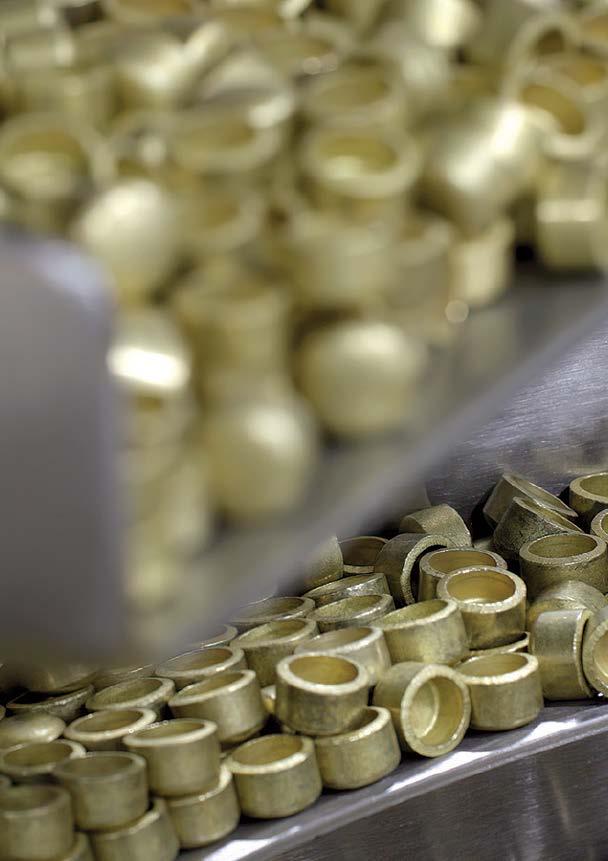
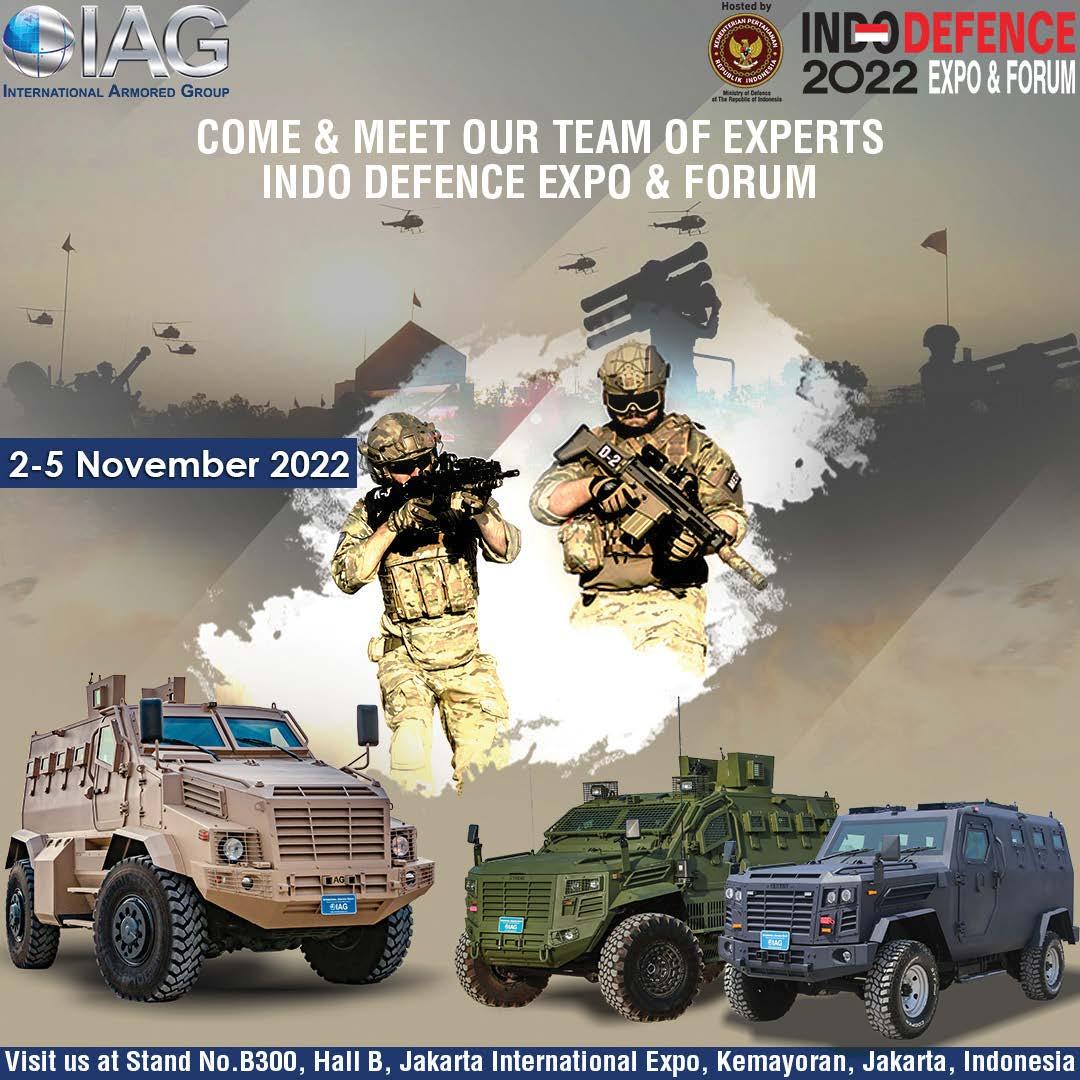
Kalyani Group’s MGS 8X8 HMV was unveiled Dr. Samir V Kamat, Secretary Defence R&D and Chairman Defence Research and Development Organization (DRDO) during Def Expo 2022.


The MGS 8x8 is a 155mm/52cal Mounted Artillery Gun System, the only artillery gun in the world with the capability of firing from Zone 1 to Zone
7. With a diverse operating temperature range and capability to fire in extreme diverse weather conditions of - 4 to 45 degrees.
The gun comes equipped with quick shoot and scoot capability with a high degree of accuracy and consistency.
The 8x8 has a high chamber volume of 25 litres, with future provision of up gunning.
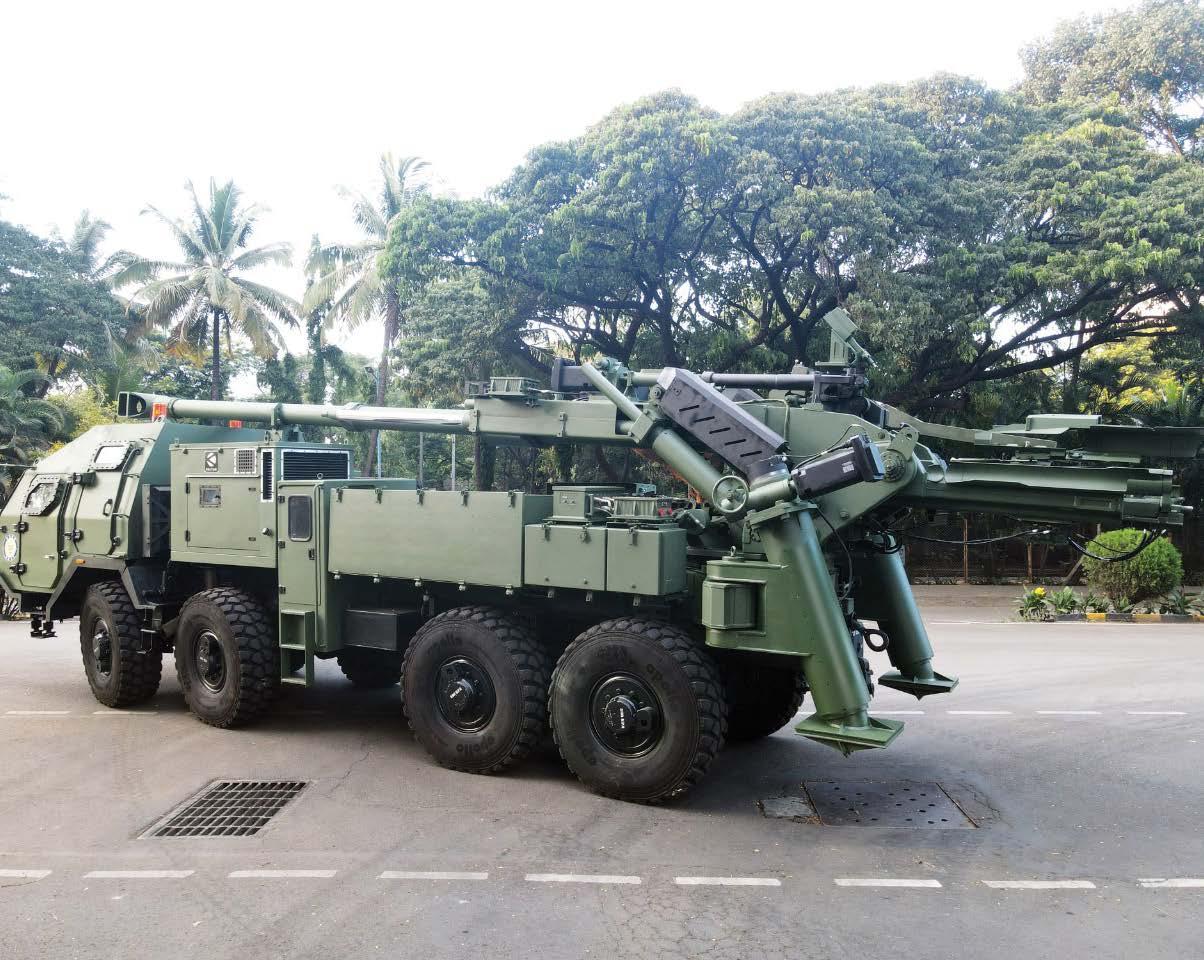
Key Modern Features of the MGS 8X8
• Auto loading and positioning system
• Automatic Ammunition Handling system
• Auto Laying
• Safety interlocks and redundancy systems
• All Electric drives ensuring least maintainability and failures
• Muzzle Velocity Radar
Schiebel was awarded with the iSAR Research and Development programme, which builds on the current CAMCOPTER® S-100 Unmanned Air System (UAS) with the aim of further developing its maritime Search and Rescue (SAR) capabilities, offering a higher level of automation.555
The scope of this multi-million Euro contract includes the further development and delivery of the high performance CAMCOPTER® S-100 UAS, including the integration of
the latest high-tech sensors, allowing the detection and identification, both day and night, of castaways, drifting objects and polluting substances in the high seas; as well as monitoring toxic and hazardous atmospheres, emissions from ships and sea surface pollution. Furthermore, this project includes a data collection and distribution system combining information from the S-100 sensors, the manned AW139 and CN235 helicopters, as well as sensor data from two ships.
The S-100 payloads will include an Overwatch Imaging PT8DN Oceanwatch, a Trakka TC-300 EO/IR sensor, an Aeromon BH-12 Emission Measuring Device, and a set of SENSIA Gas Imaging Devices.
India’s Ministry of Defence (MoD) has signed a contract with BrahMos Aerospace Pvt. Ltd. (BAPL) for acquisition of additional dual-role capable surface-to-surface BrahMos missiles at an overall approximate cost of Rs 1,700 crore under ‘Buy-Indian’ category. Induction of these dual-role capable missiles will significantly enhance the operational capability of Indian Navy (IN) fleet assets and the contract will provide further impetus to ‘Aatmanirbharta’ (selfsufficiency) in defence production.

BAPL is a joint venture (JV) between India and Russia and has been making crucial contributions to augment the new generation Surface-to-Surface Missiles (SSMs) with enhanced range and dualrole capability for land as well as anti-ship attacks.
The latest contract would be giving further boost to indigenous production of critical weapon systems and ammunition with active participation of indigenous
industry, said MoD.
A combination of the names of Brahmaputra and Moskva rivers, BrahMos missiles are designed, developed and produced by BrahMos Aerospace, a joint venture company set up by Defence Research and Development Organisation (DRDO) and Mashinostroyenia of Russia.
The first test launch of the initial version of BrahMos took place in 2001. Various types of the BrahMos, including those which can be fired from land, warships and the Sukhoi-30 fighter jets, have already been developed and successfully tested and inducted since then.
BrahMos is a two-stage missile with a solid propellant booster engine. Its first stage brings the missile to supersonic speed and then gets separated. The liquid ramjet or the second stage then takes the missile closer to three times the speed of sound in cruise phase. The missile has a very low radar signature, making it stealthy, and can achieve a
variety of trajectories.
The ‘fire and forget’ type missile can achieve a cruising altitude of 15 km and a terminal altitude as low as 10 m to hit the target. The enhanced range version of the missile has a range of 4,000 km, as compared to the original range of 290 km.
In March 2022 India successfully testfired the surface-to-surface missile at Andaman and Nicobar Islands.
The extended-range missile was able to hit the target with pinpoint accuracy. The test was conducted in presence of Air Chief Marshal V R Chaudhari who also congratulated everyone involved for the successful test firing of the cruise missile. “Air Chief Marshal V R Chaudhari congratulated on the successful test-firing of surface-to-surface BrahMos supersonic cruise missile. He is in the Island territory of Andaman & Nicobar to review operational preparedness,” Defence officials had said during the test.
Induction of the dual-role capable missiles will significantly enhance the operational capability of Indian Navy fleet assets and the contract will provide further impetus to ‘Aatmanirbharta’ in defence production, said the Defence Ministry
The Abraham Accords have opened the door for us to participate for the first time in this exhibition and to work collaboratively with our neighbors to deal with the common threats we face in the region. IAI’s capabilities, alongside the impressive relationships that we developed over the last two years with our colleagues in the Gulf States, will allow us to continue to expand the company’s contribution to both technology and defense in the region, whereby our proven capabilities can help ensure a higher degree of regional stability.
Amir Peretz Chairman of IAI’s Board of Directors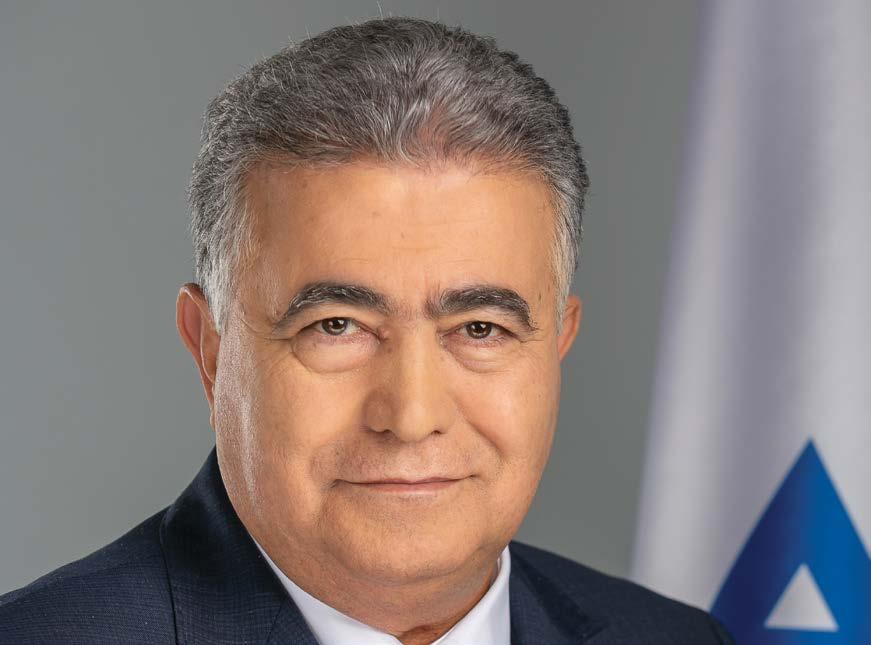
As we celebrate two years since the signing of the Abraham Accords, IAI is thrilled to participate in the Bahrain International Airshow and to broaden cooperation with business partners in the Gulf region. It’s a wonderful opportunity to meet with our partners and prospective partners and showcase the cuttingedge solutions IAI has developed. We believe that there are several opportunities to work together, share our knowledge, and develop new defense and civilian solutions with our partners in the Gulf region, and together, to create a brighter and safer future for our region.
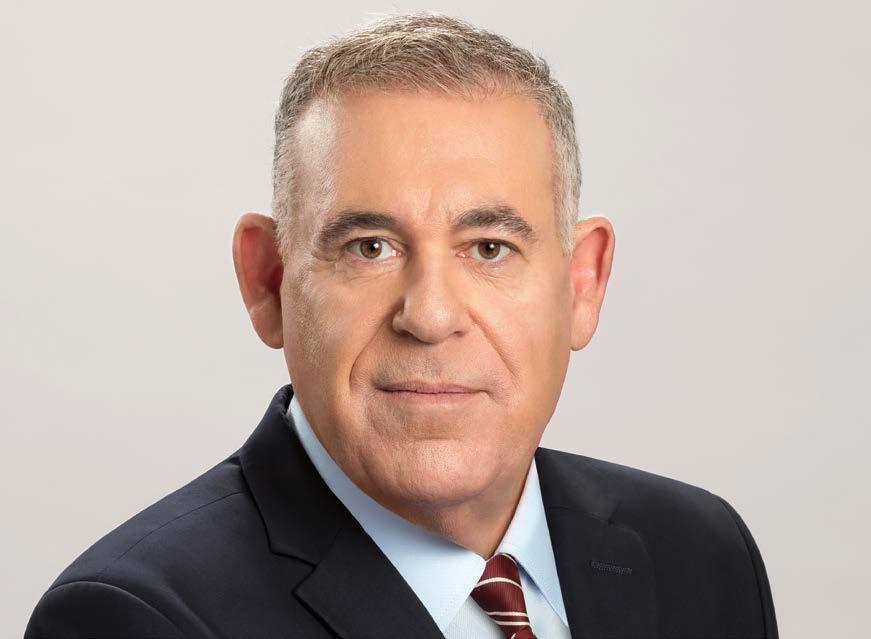
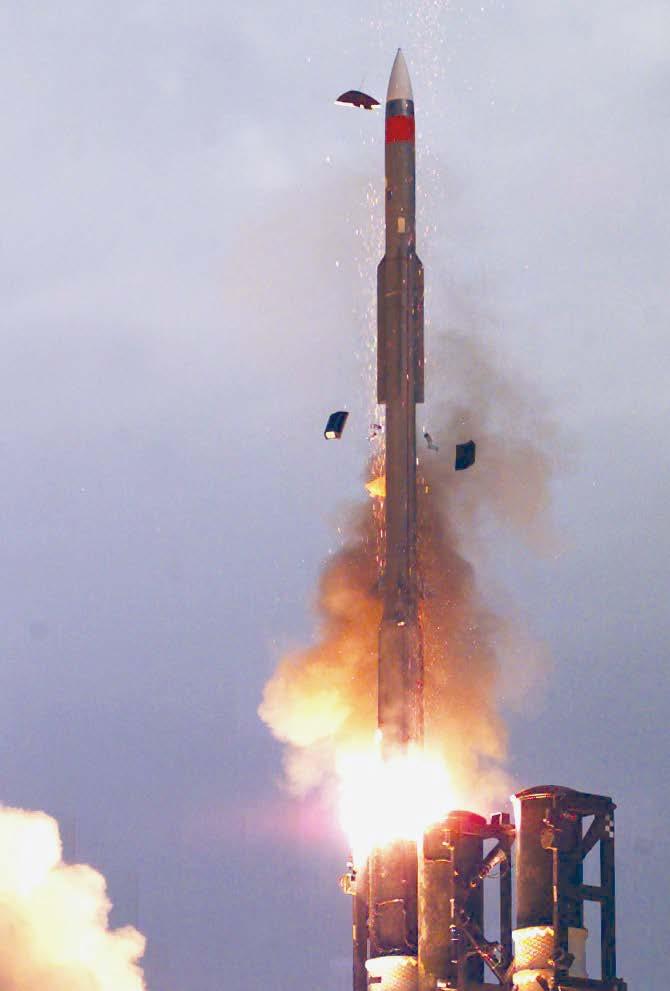 Boaz Levy IAI President and CEO
Boaz Levy IAI President and CEO
In a historic first, Israel Aerospace Industries (IAI), a world-class aerospace and defense company, will exhibit at the prestigious Bahrain International Airshow, taking place on 9-11 November. IAI will showcase a variety of its state-of-the-art aviation products, including civil aviation, radars and avionics, air defense systems, coastal guard and drone guard systems. This is the first time that an Israeli company is participating in the event.
The ‘Future airport development and investment summit’ at Riyadh would create business opportunities between the world’s leading airport suppliers and services. Moreover, Saudi Arabia has embarked on a new aviation development programme that will make the Kingdom a top aviation and air cargo route in the world
Saudi Airport Exhibition, the premier airport development event in Saudi Arabia, will take place at Al Faisaliah Hotel, Riyadh, during November 7-8, 2022. The ‘Future airport development and investment summit’ would create business opportunities between the world’s leading airport suppliers and services. The event will focus on three key themes of ‘Expansion’, ‘Innovation’ and ‘Collaboration’, giving participants the tools and connections to accelerate the socio-economic benefits of aviation growth in Saudi Arabia.
The exhibition, in which over 100 companies are expected to take part, will feature multiple platforms for attendees to learn from global industry leaders, view the latest technologies from around the world and build new partnerships to enhance their own business. The event will also provide a critical platform to host bilateral discussions between Saudi aviation leaders and the global supply chain to enhance the Kingdom’s airports industry, as well as promote Saudi government and commercial entities to global attendees, thus directly contributing to Saudi Arabia’s GDP.
The exhibition assumes much significance as Saudi Arabia is the world’s fourth fastest growing aviation market. Moreover, it is the only airport-dedicated event in Saudi Arabia and offers a unique opportunity for aviation global manufacturers and suppliers to build new business. They can be featured
alongside the latest technologies and innovations from across the world and get valuable project updates first hand from Saudi aviation officials. The event also supports international trade and export agencies to build post COVID-19 business.
The summit will feature two days of conferences featuring keynotes and panel debates from the industry’s top global thought leaders, visionaries and innovators. Expert speakers will share the latest ideas, observations and predictions, with a focus on the trends, technologies, challenges and opportunities they see for the sector over the next decade.
With tens of millions of new tourist arrivals expected by the end of the decade, a massive expansion is required in Saudi Arabia’s airport infrastructure and leading global investors, manufacturers and suppliers will be invited to showcase how they can support and be part of these developments. The exhibition will provide the best opportunities for any global airport industry supplier looking to enter or expand in one of the world’s top five airport growth markets over the next 20 years.
As speakers, the summit will feature over 40 international aviation leaders and experts, who will be sharing their insights on the industry’s greatest challenges and opportunities. The speakers will include
ANSPs, airlines, airport authorities, cargo handlers, civil aviation authorities, consultants, contractors, government representatives, ground handlers, investors, manufacturers, regulators, security agencies and systems integrators.
Aeromag Asia is among the media partners of the summit and the event partner is DICE Marketing and Advertising Agency based out of Riyadh.
As part of the ‘Saudi 2030 Vision’ –which aims to create millions of new high skill jobs, diversify the Saudi economy and transform the Kingdom into a global hub connecting Asia, Europe and Africa - Saudi Arabia has embarked on a new aviation development programme that will place it amongst the world’s top aviation and air cargo routes. The Saudi air transport sector is expected to grow by 126% over the next 20 years, supporting approximately US Dollars 82.3 billion of GDP and almost 1.2 million jobs by 2037.
Key features of Saudi Arabia’s aviation scene include, 90% of the country’s 35 million population lives within two hours’ drive of an airport; 50% of the world’s population lives within a five-hour flight; 5.6% CAGR passenger traffic growth expected up to 2040 and 330 million annual passengers capacity required at Saudi airports by 2030.
